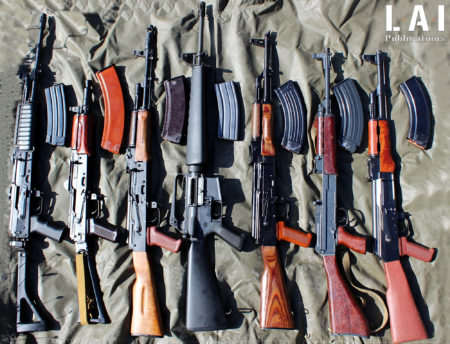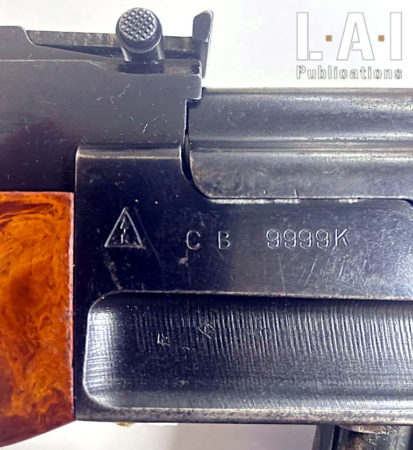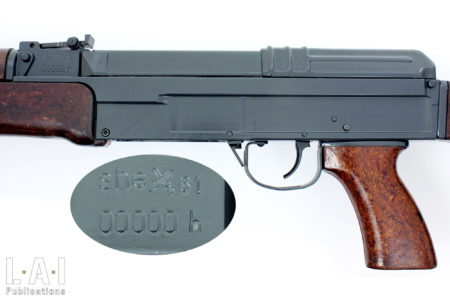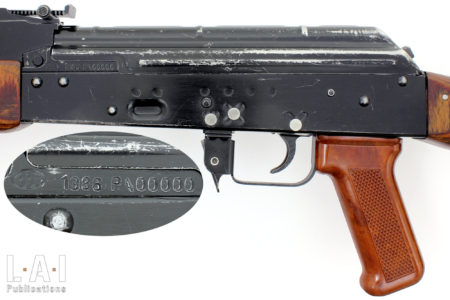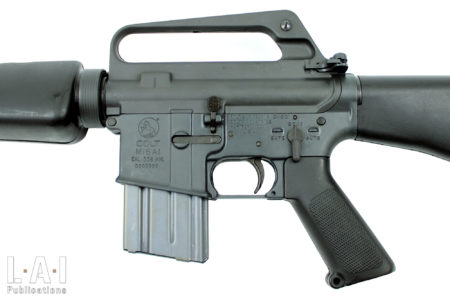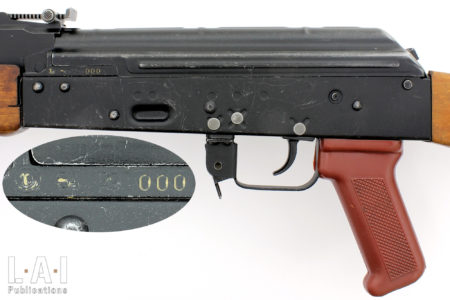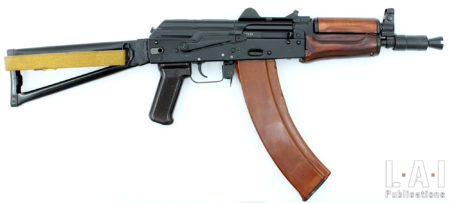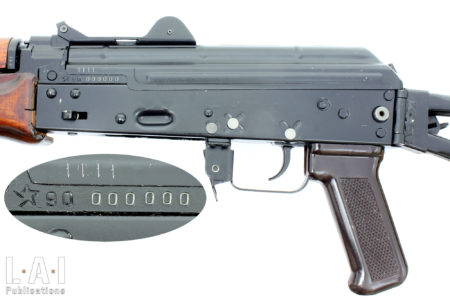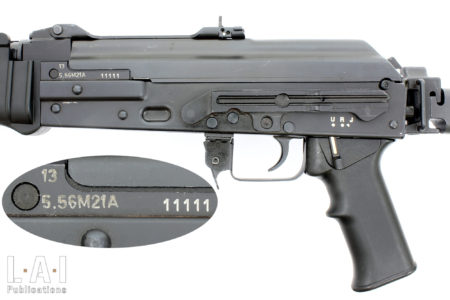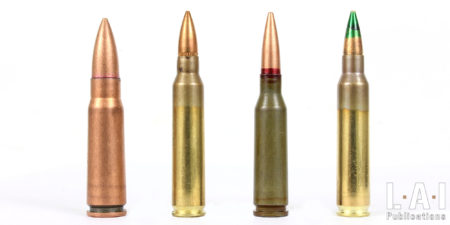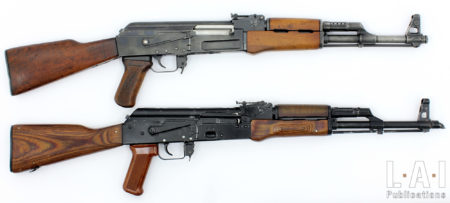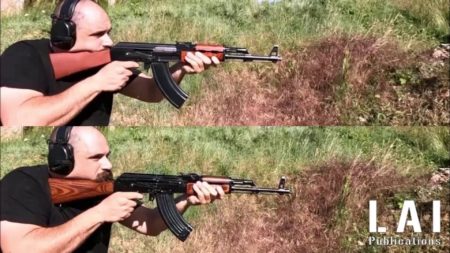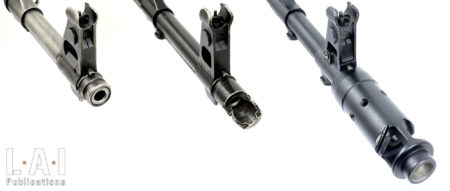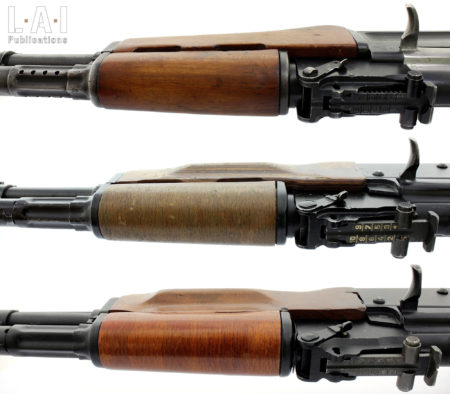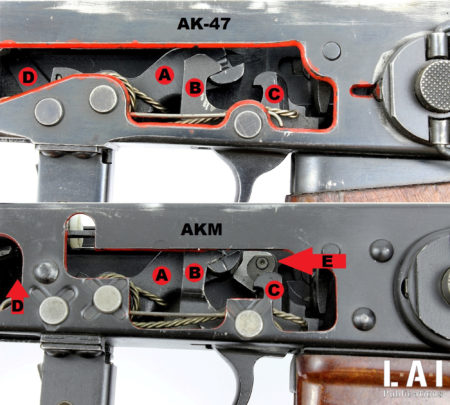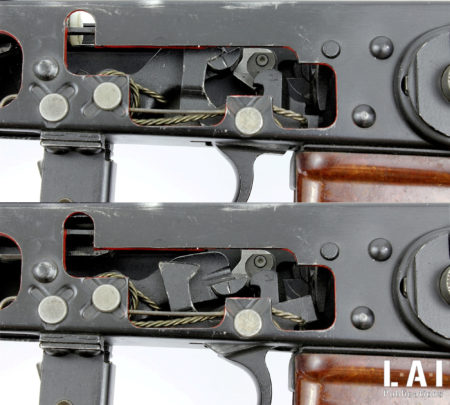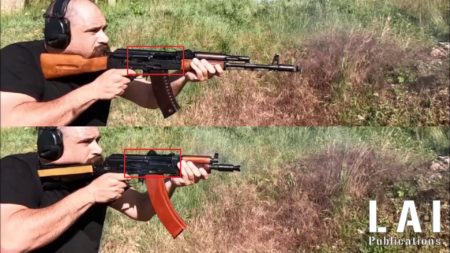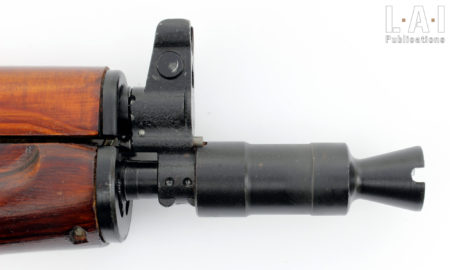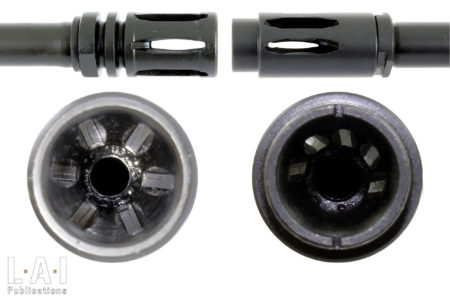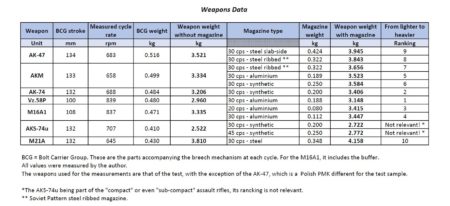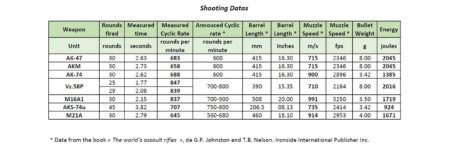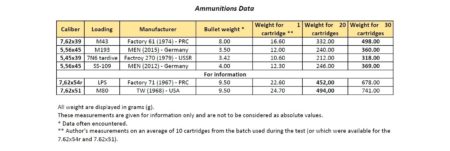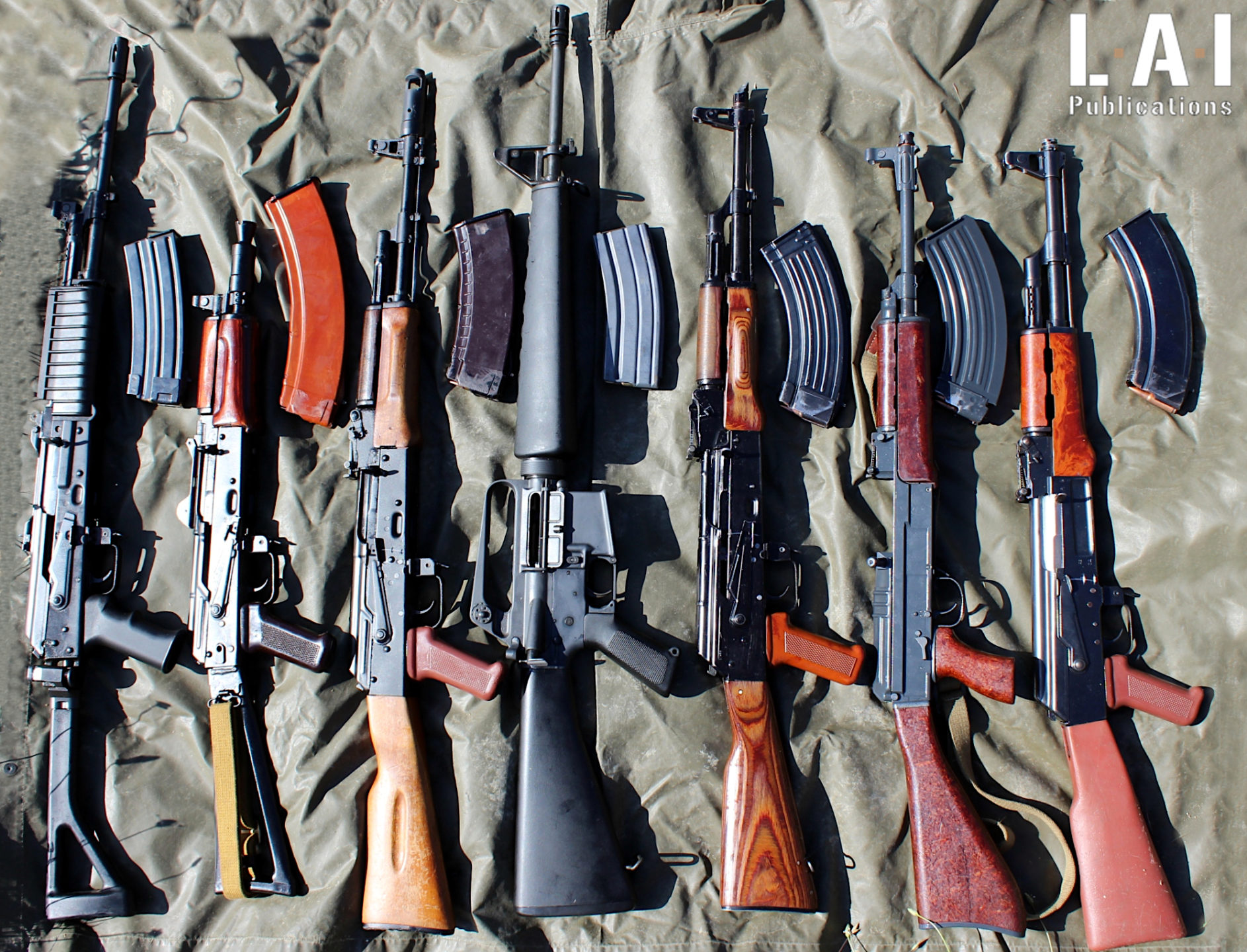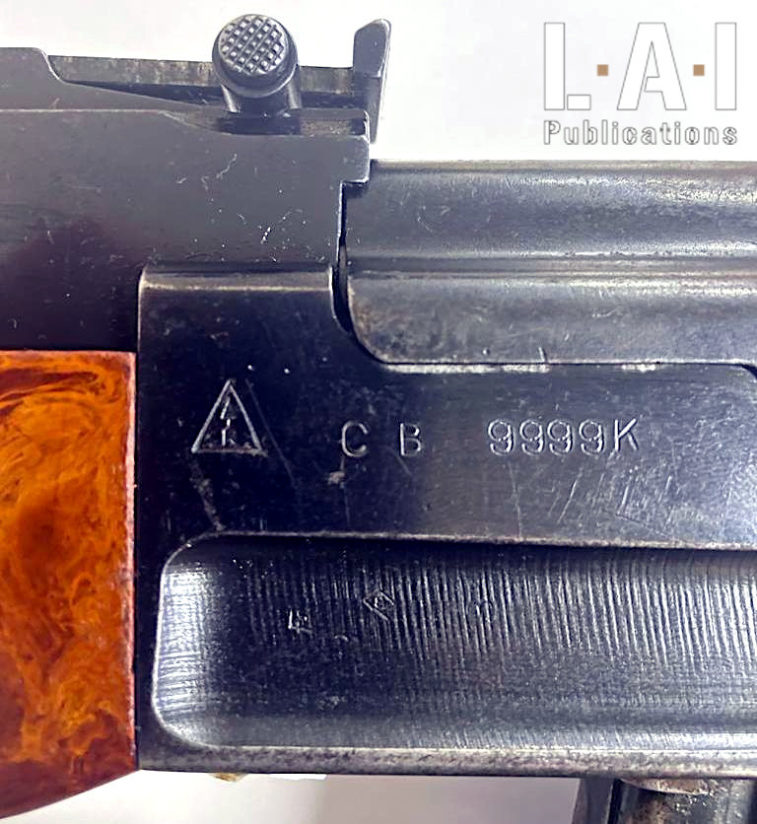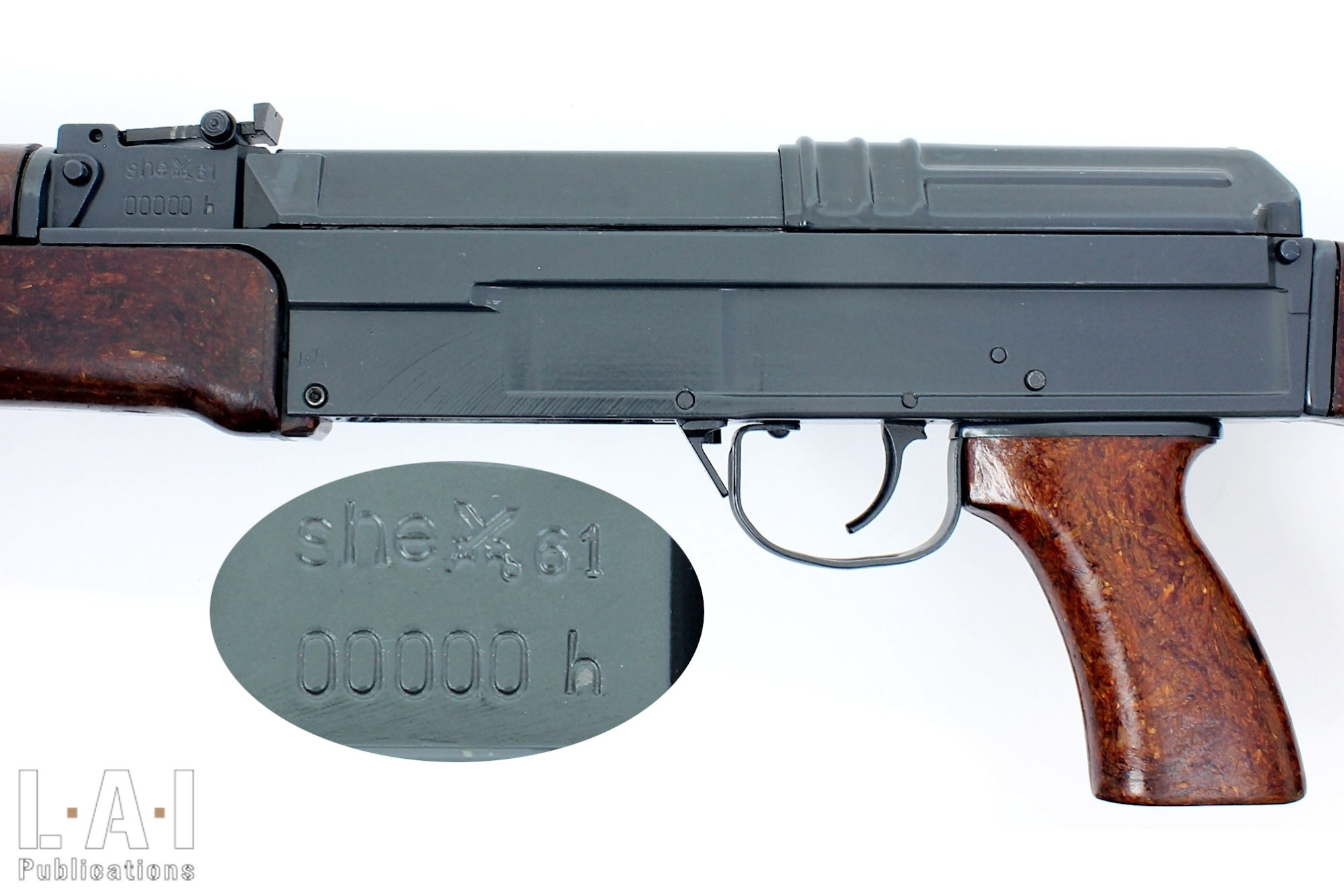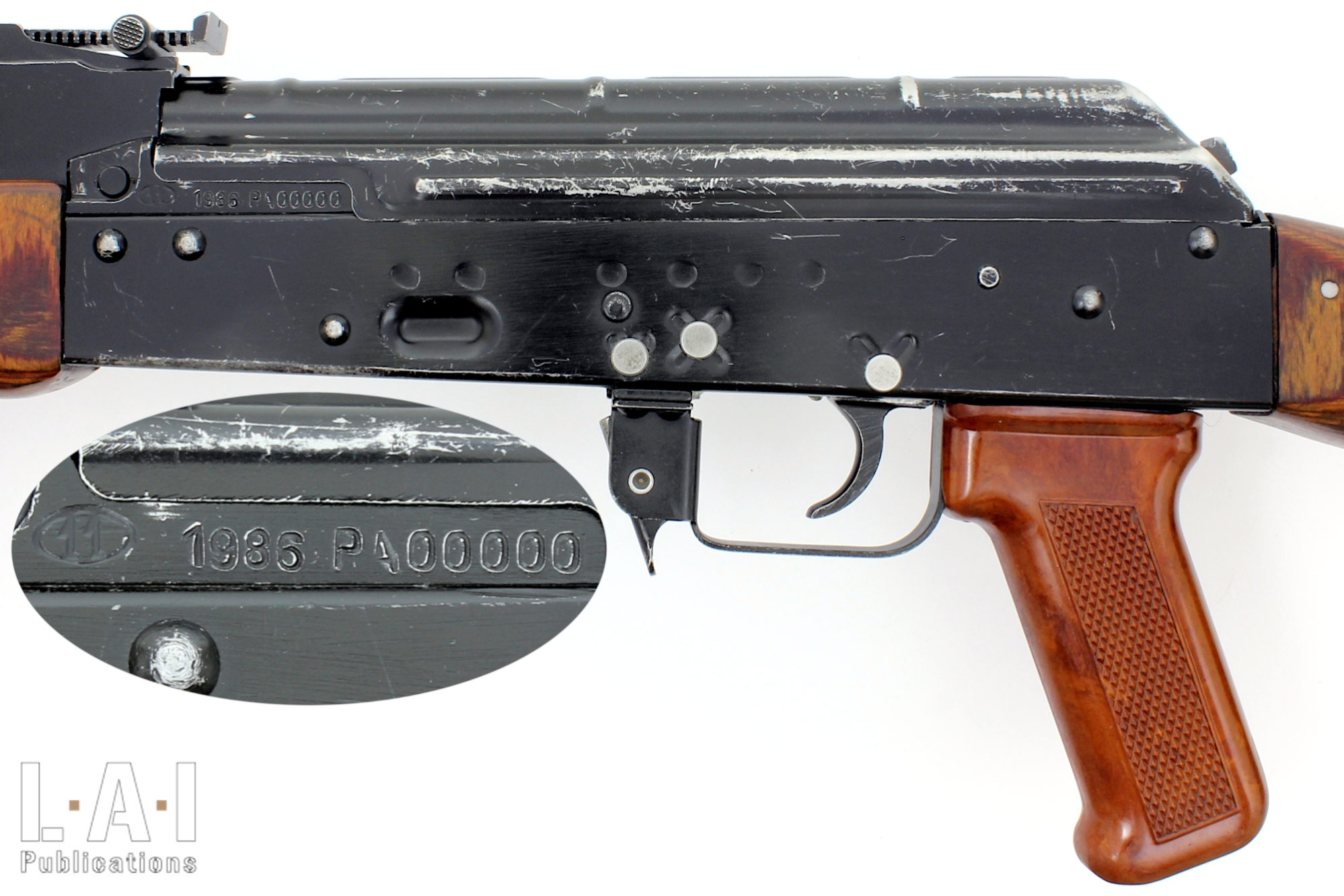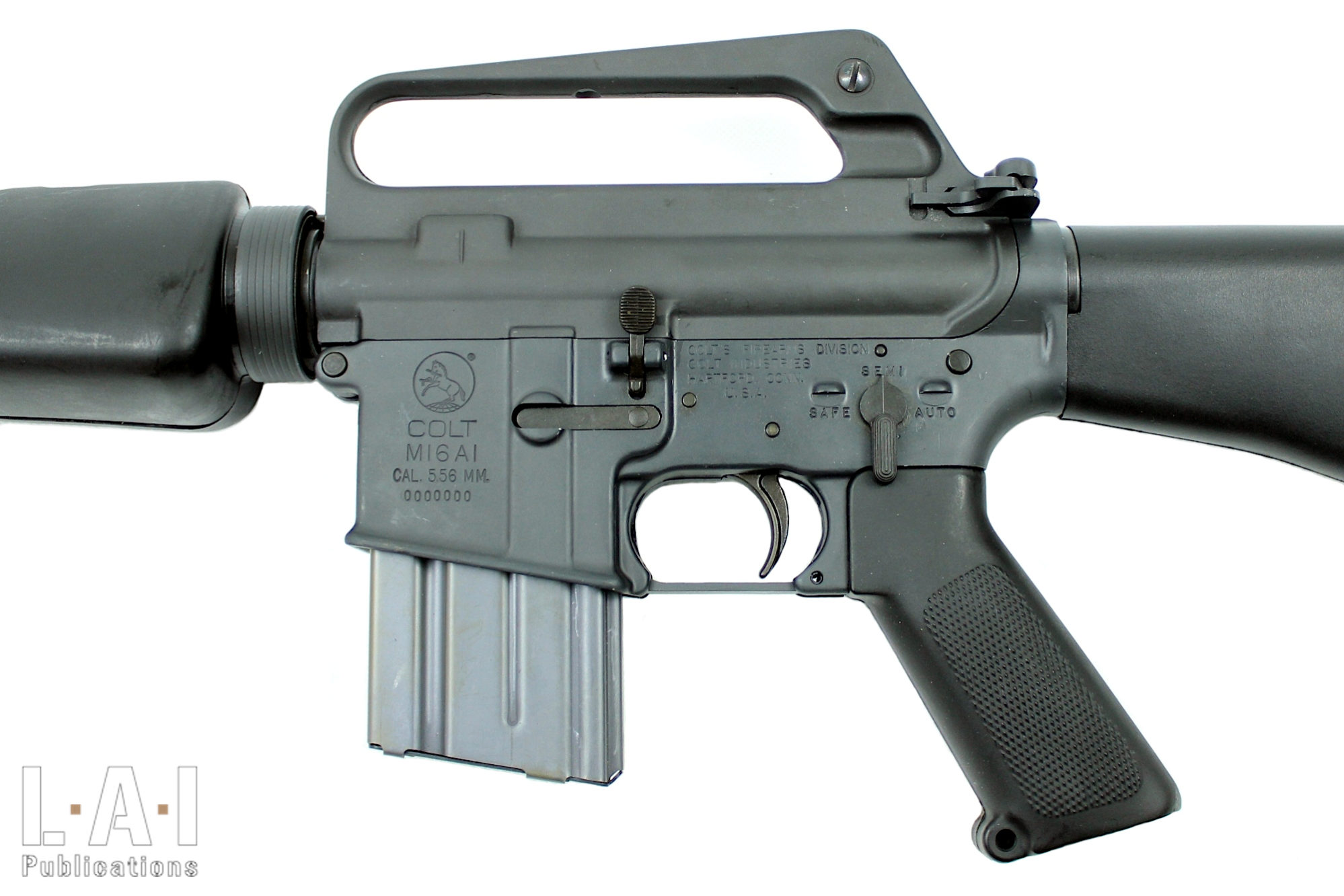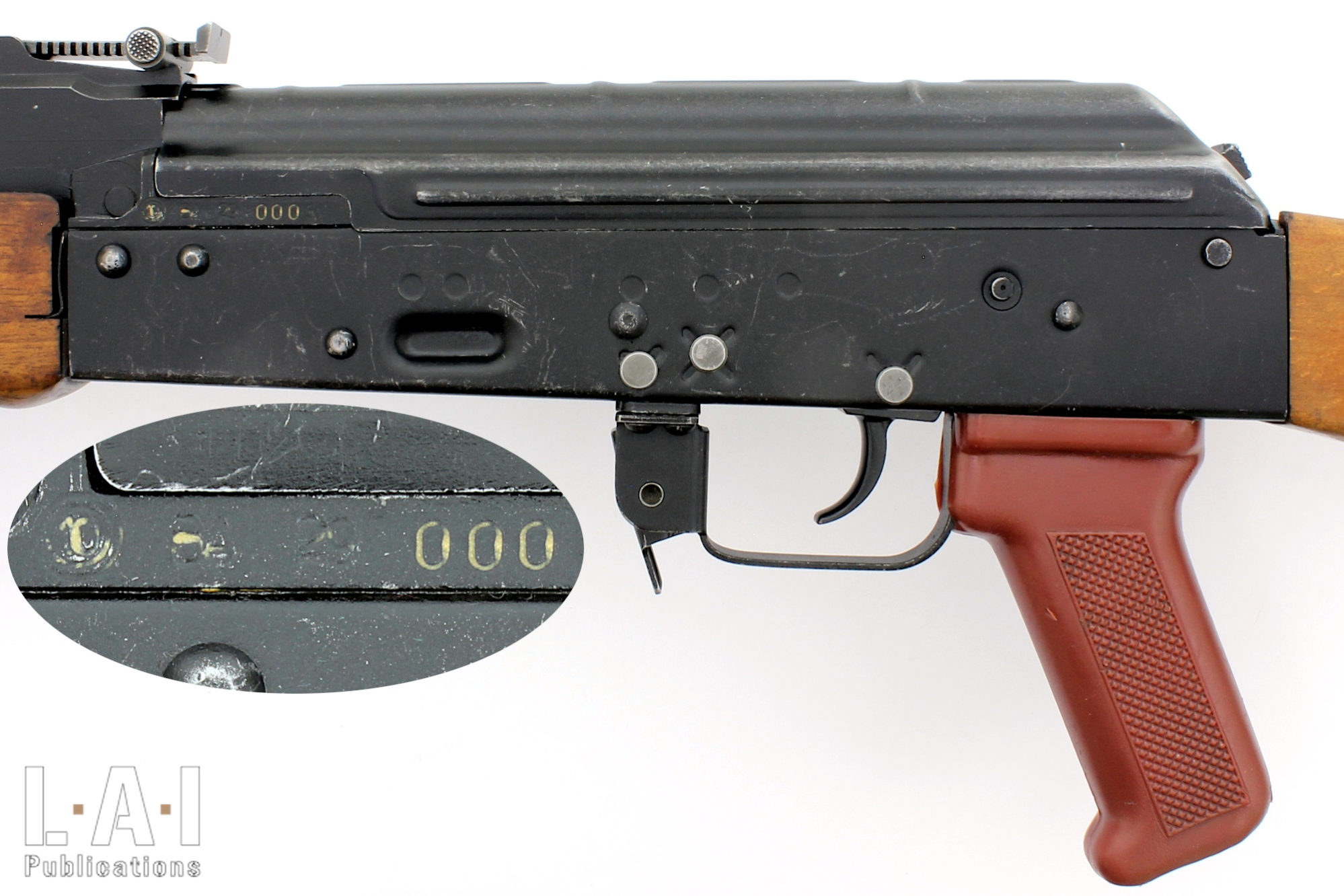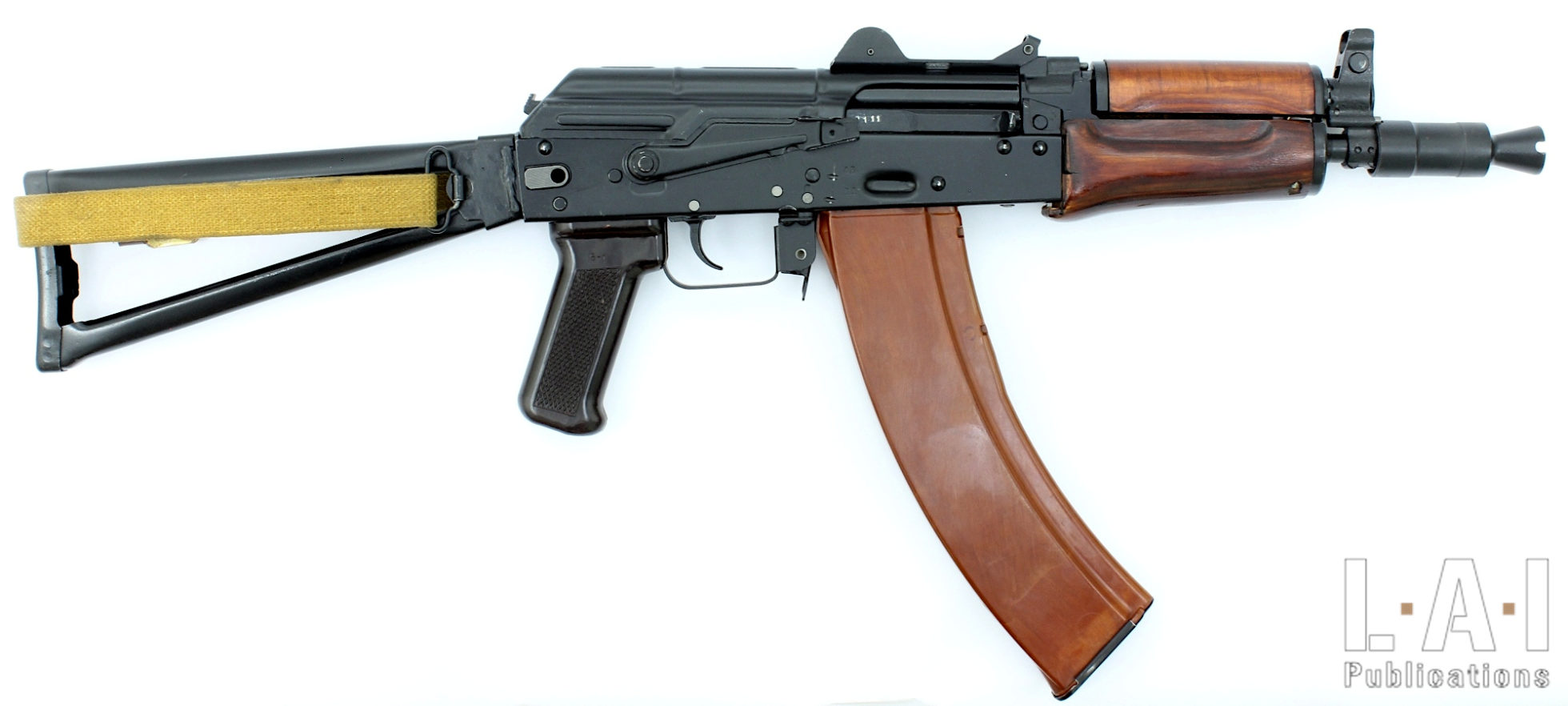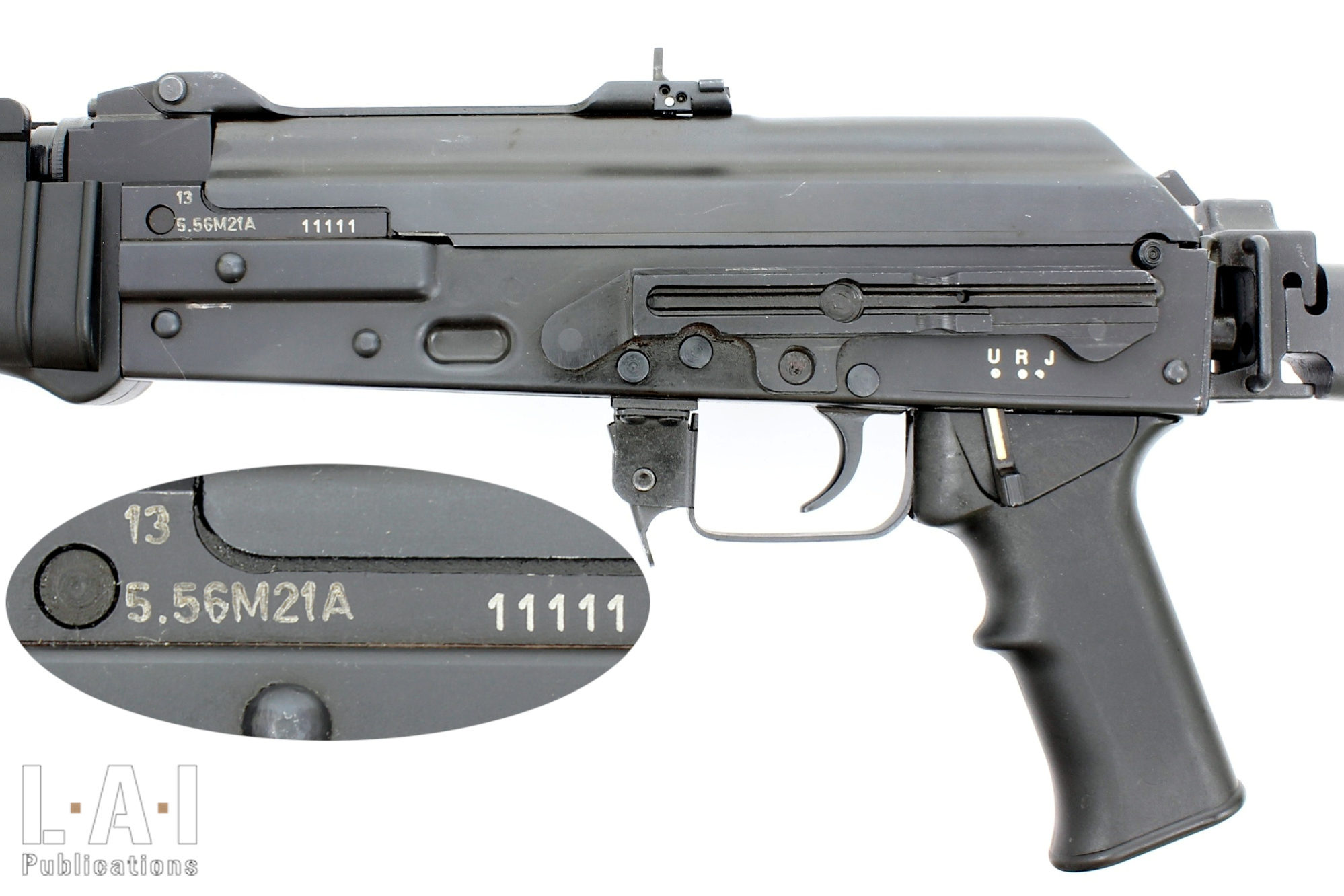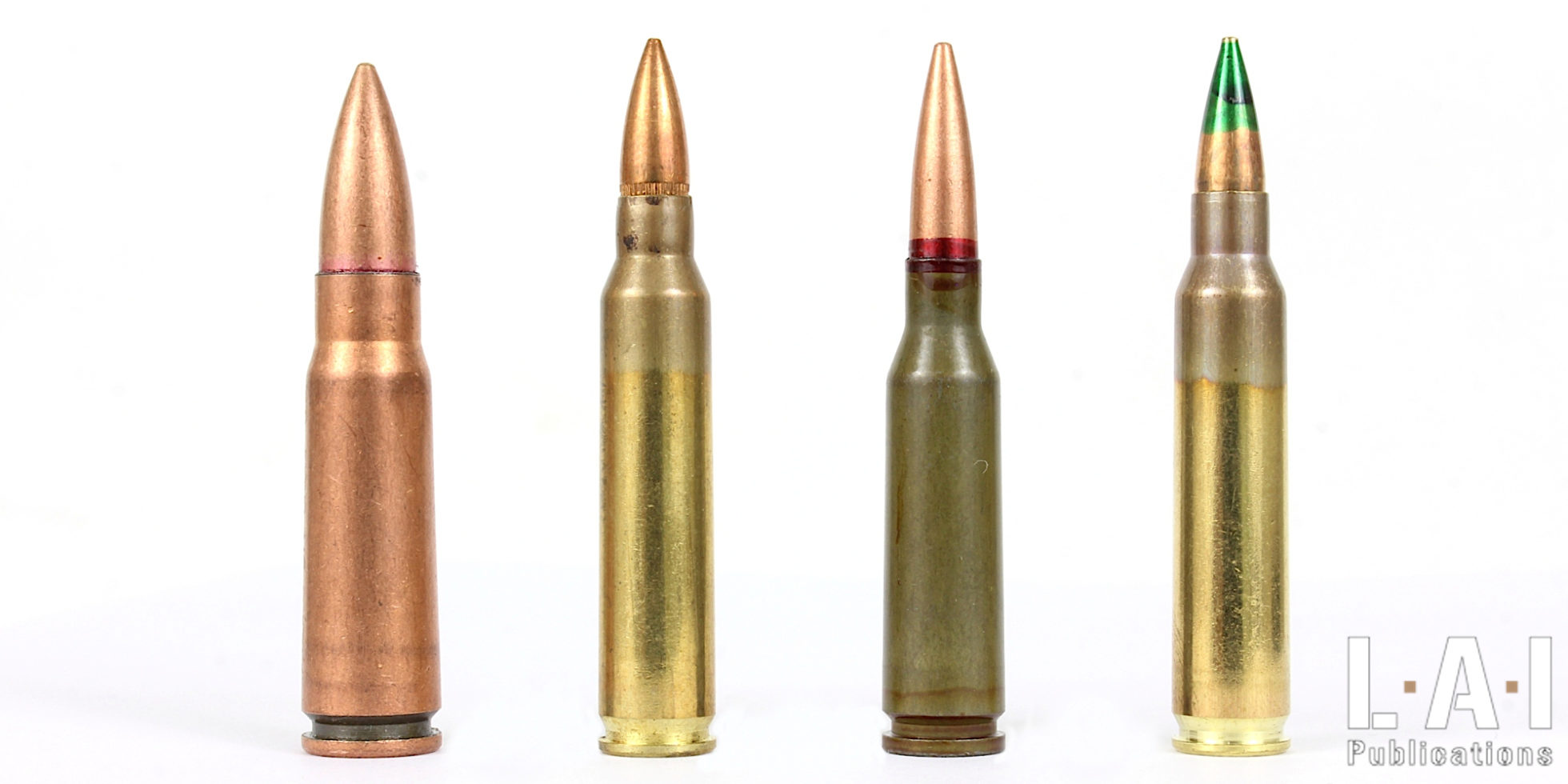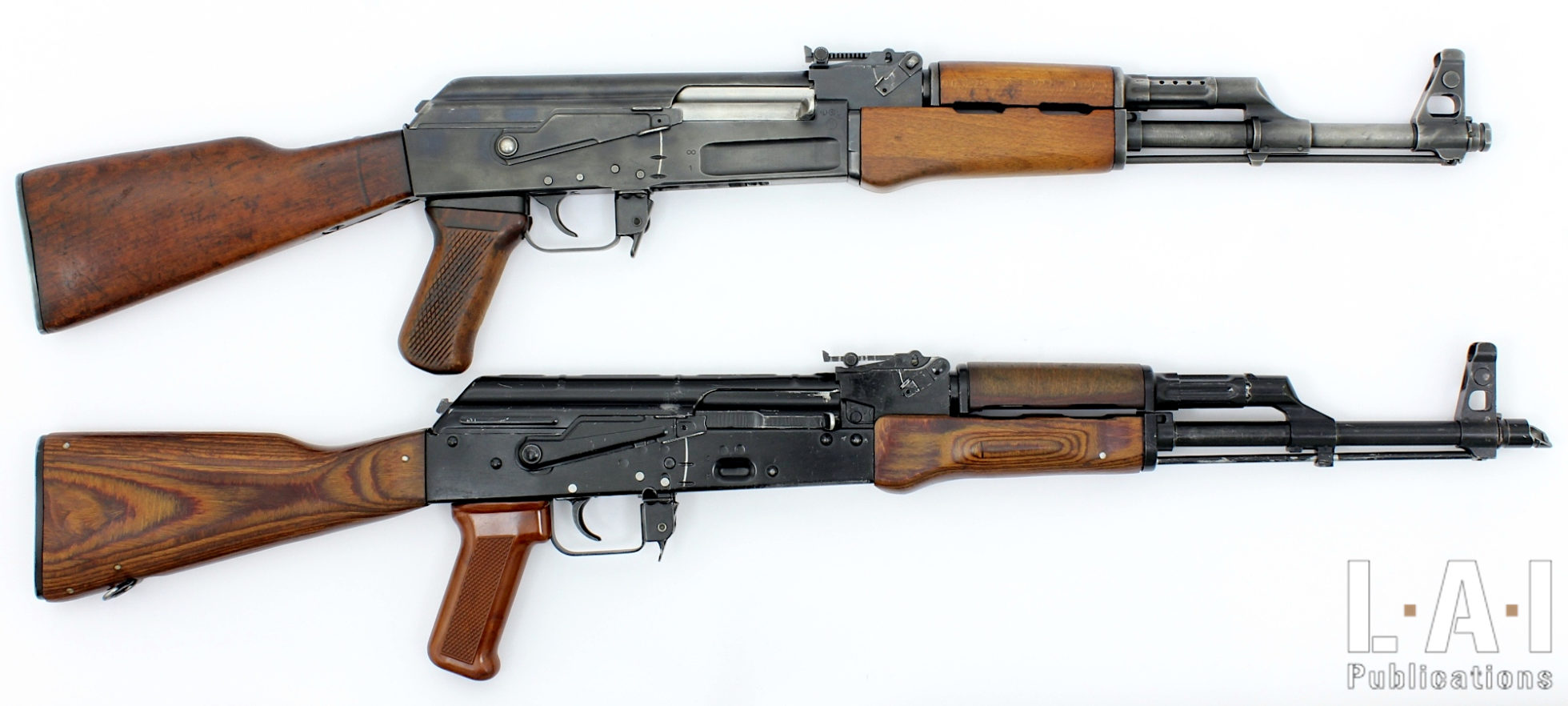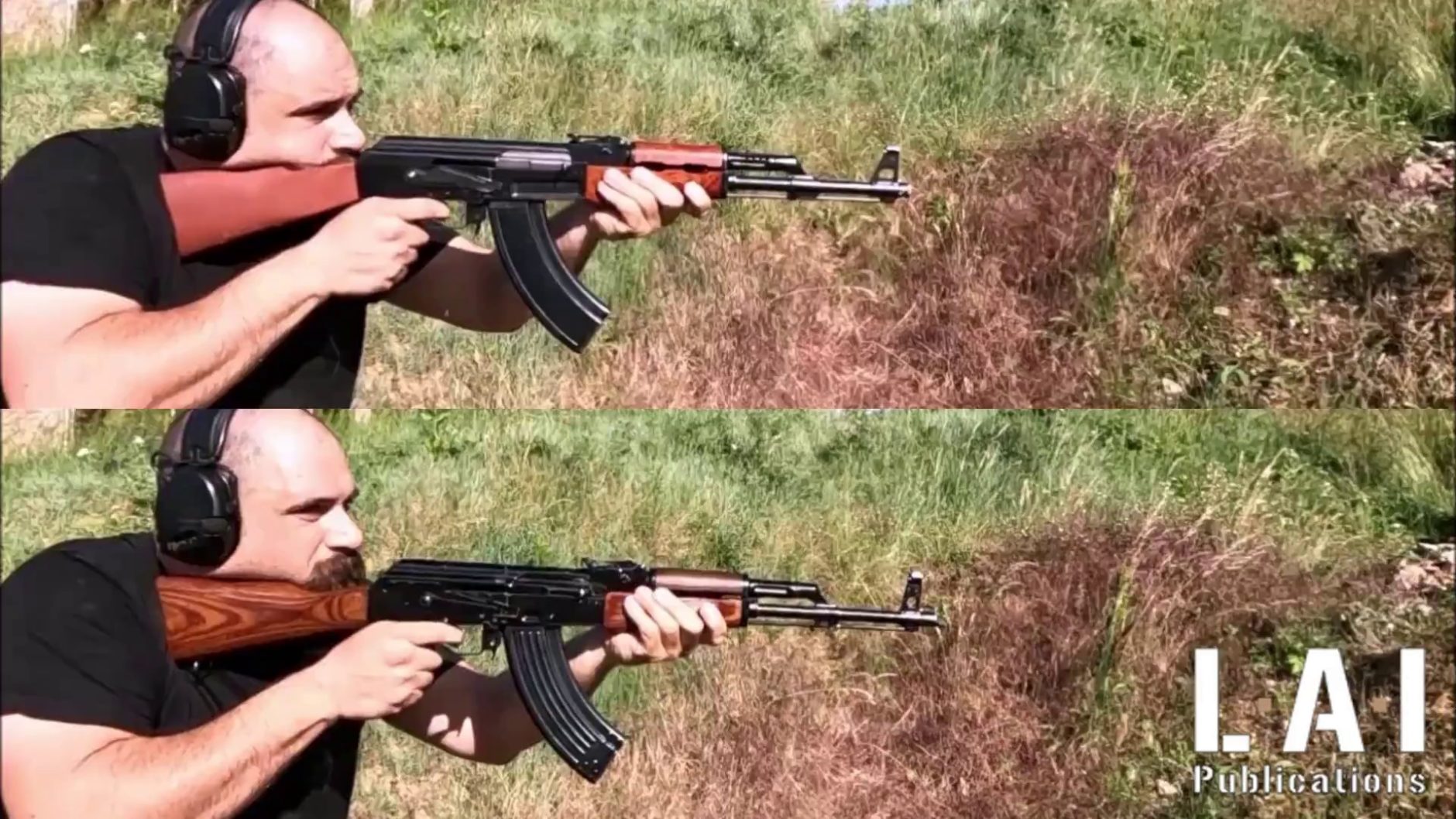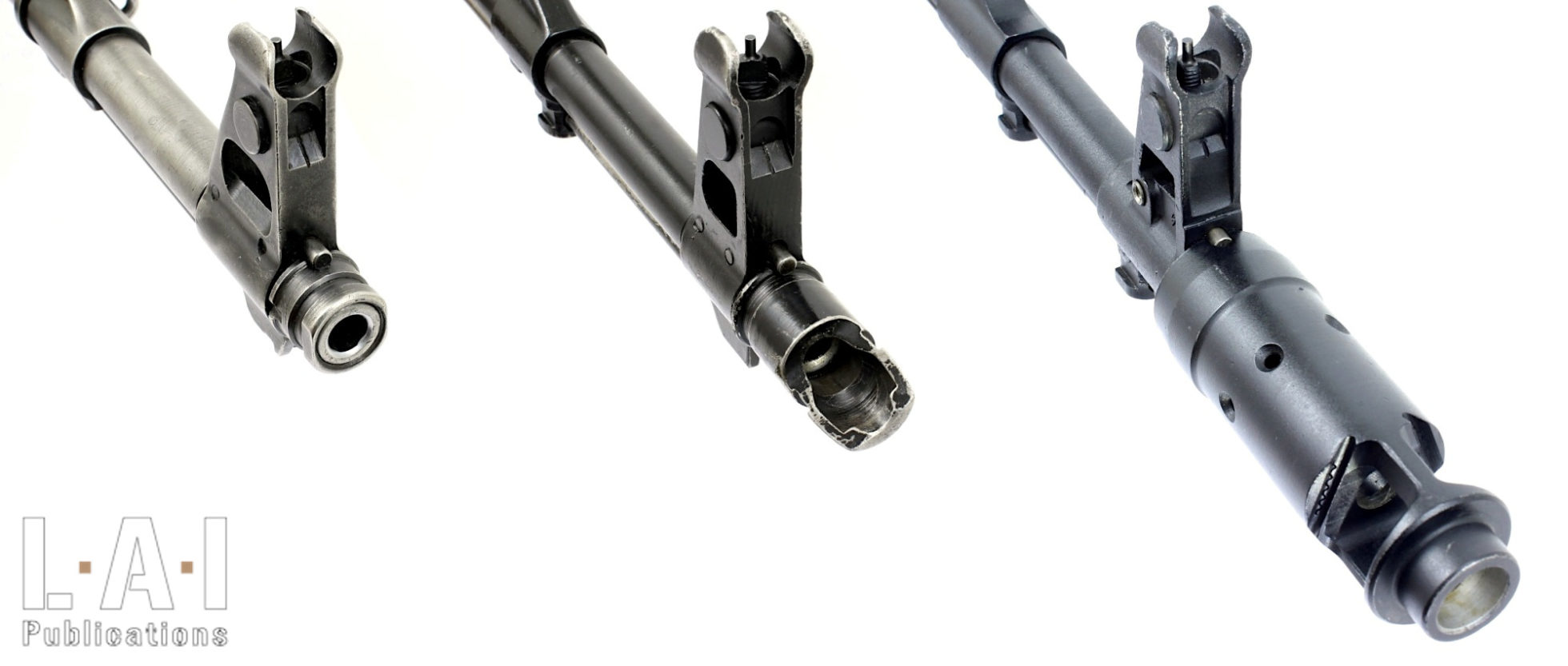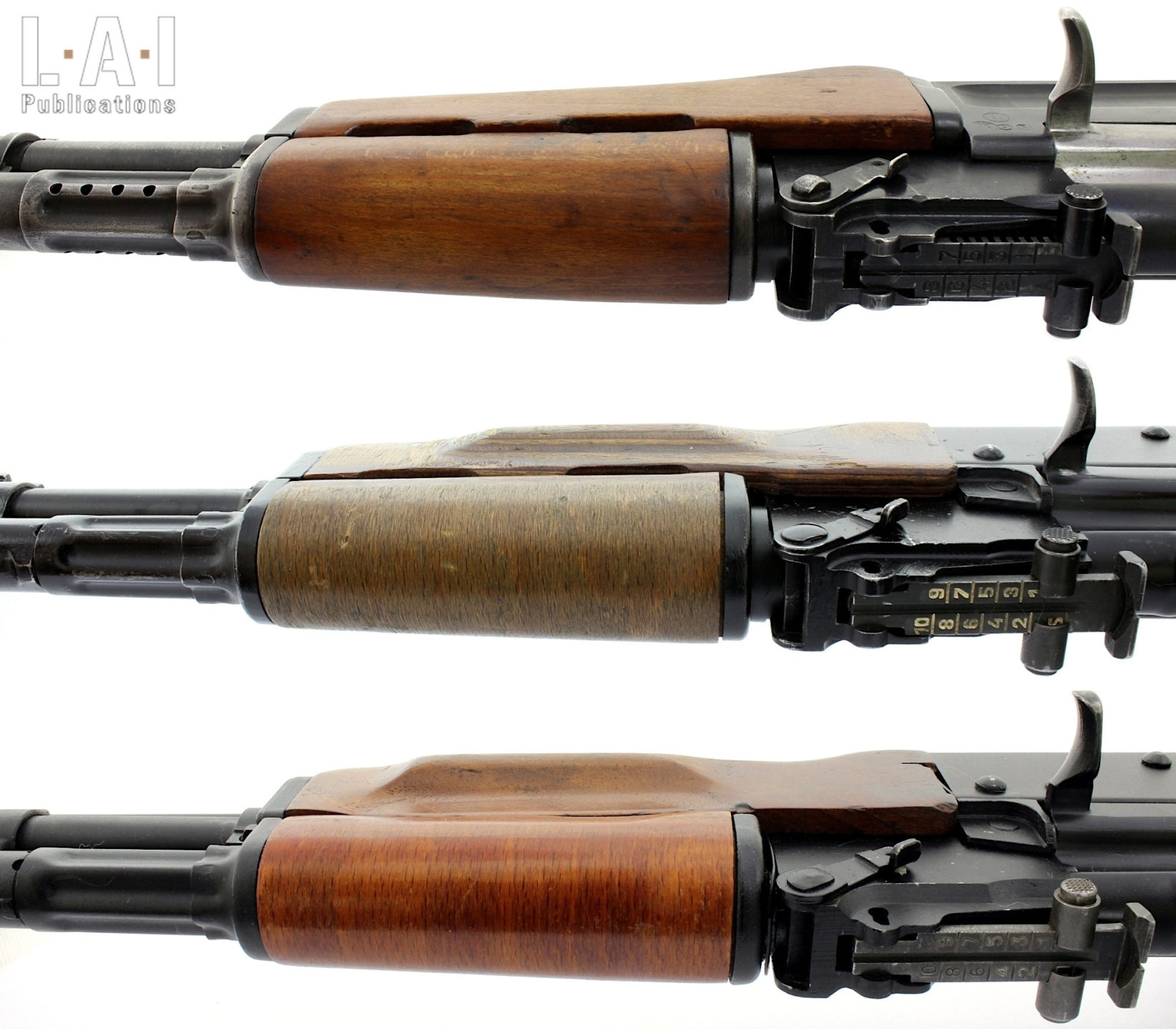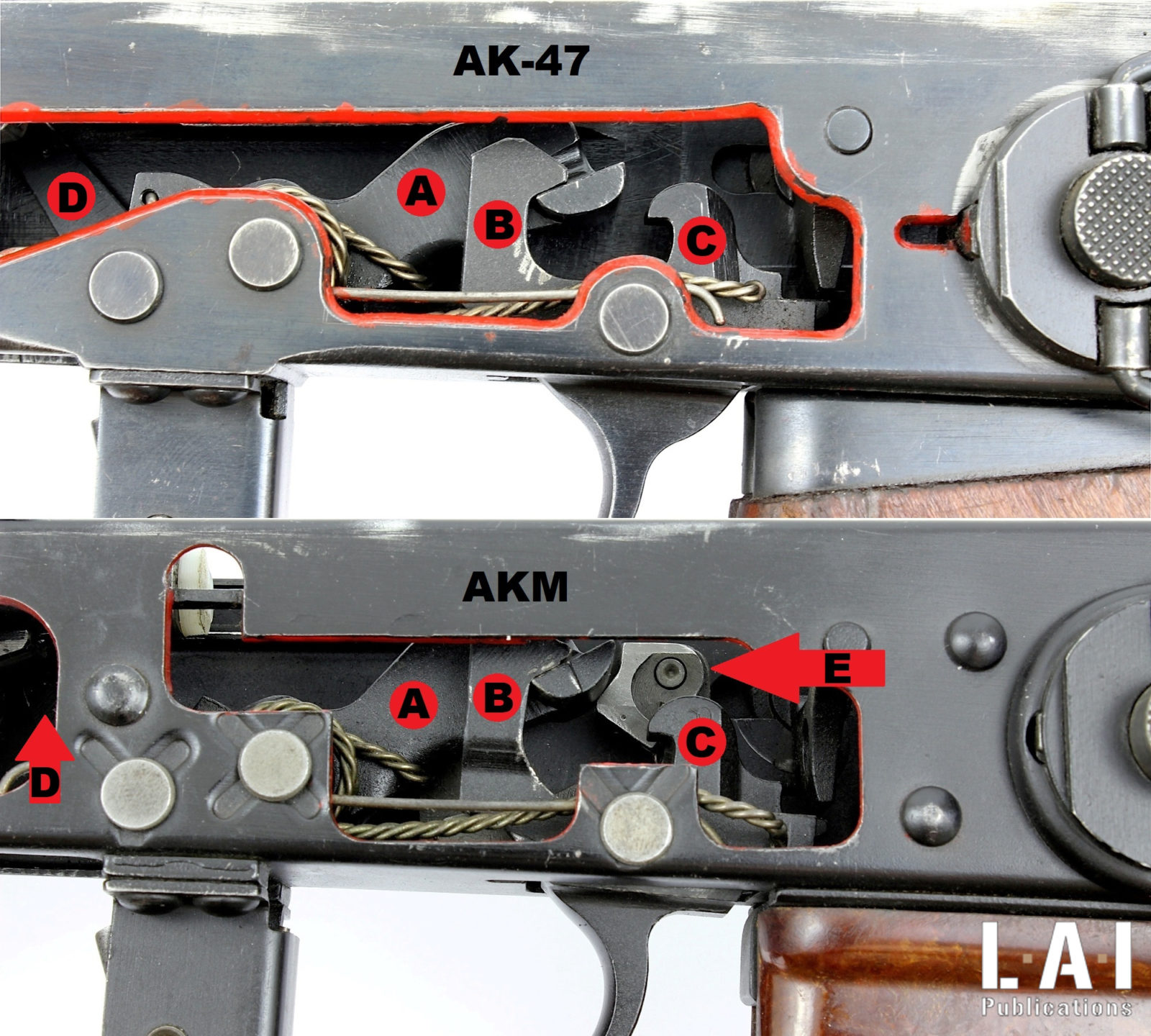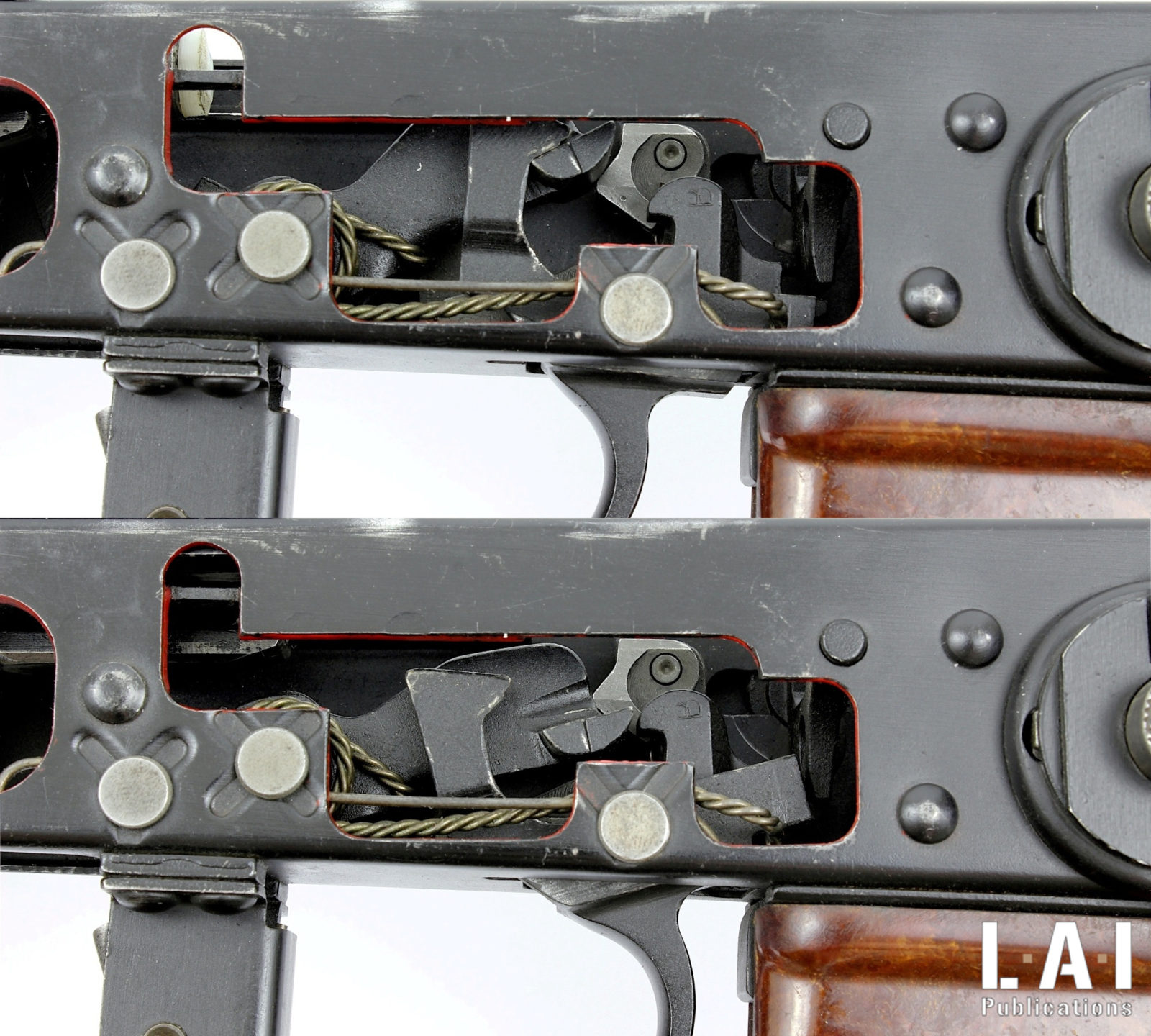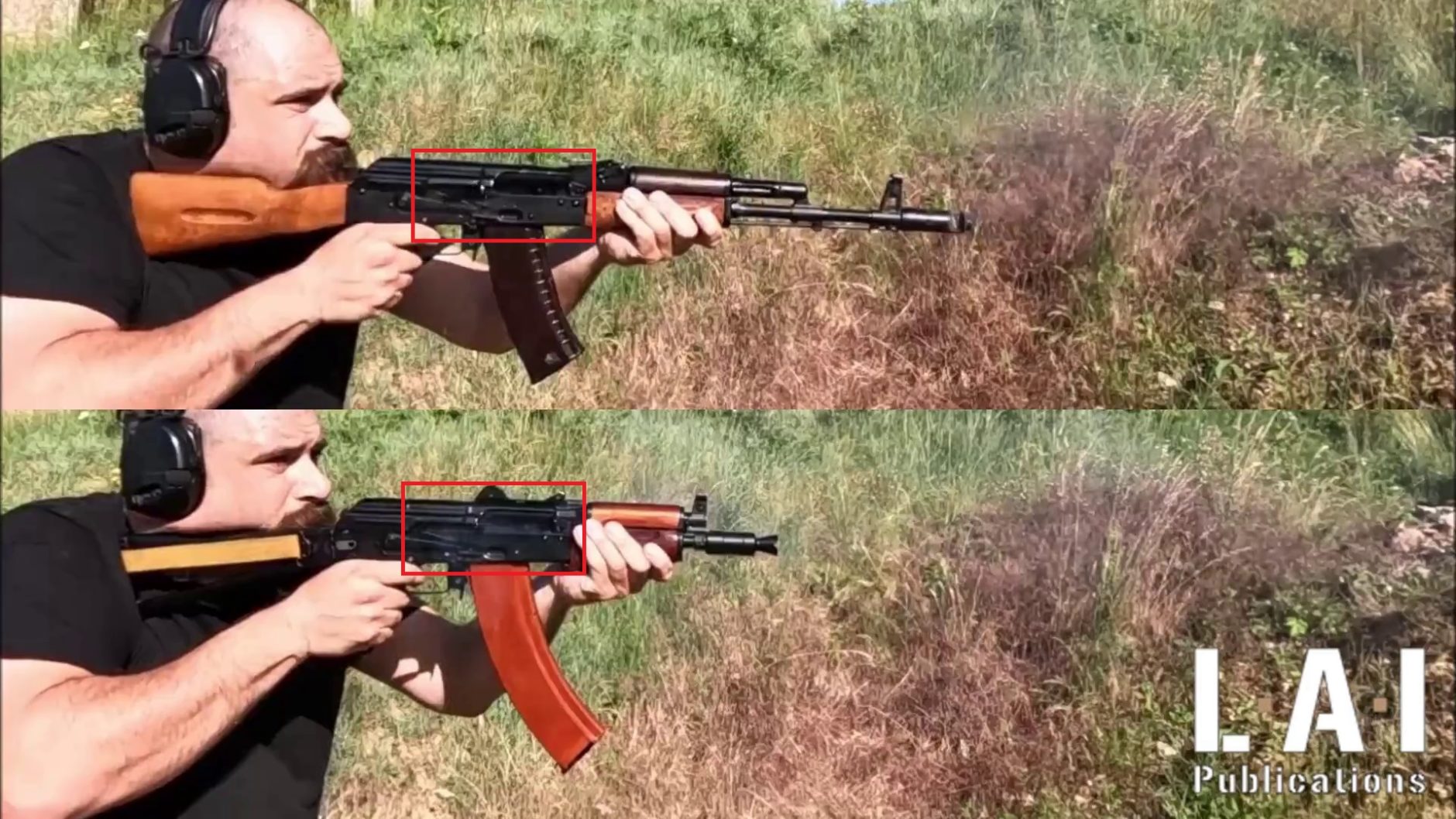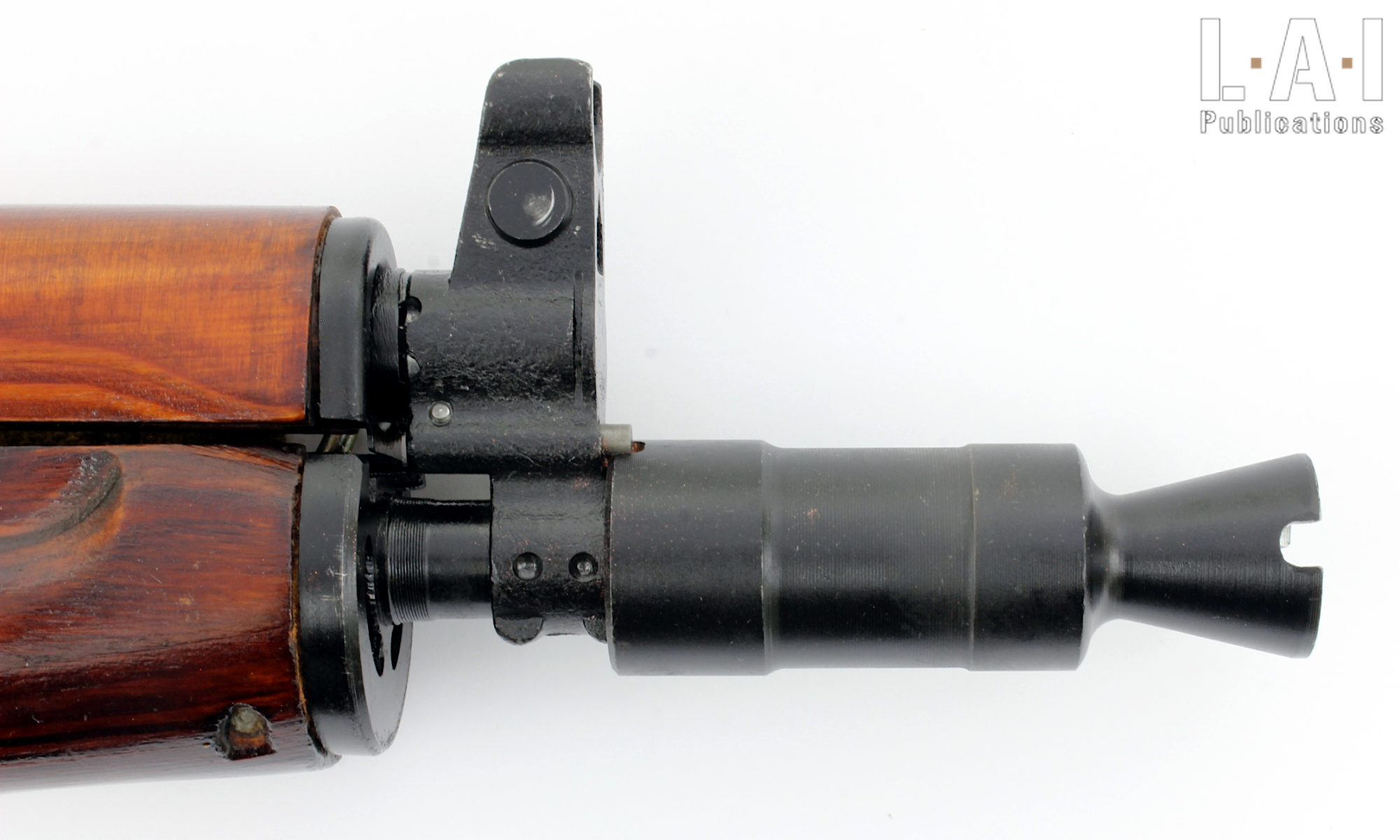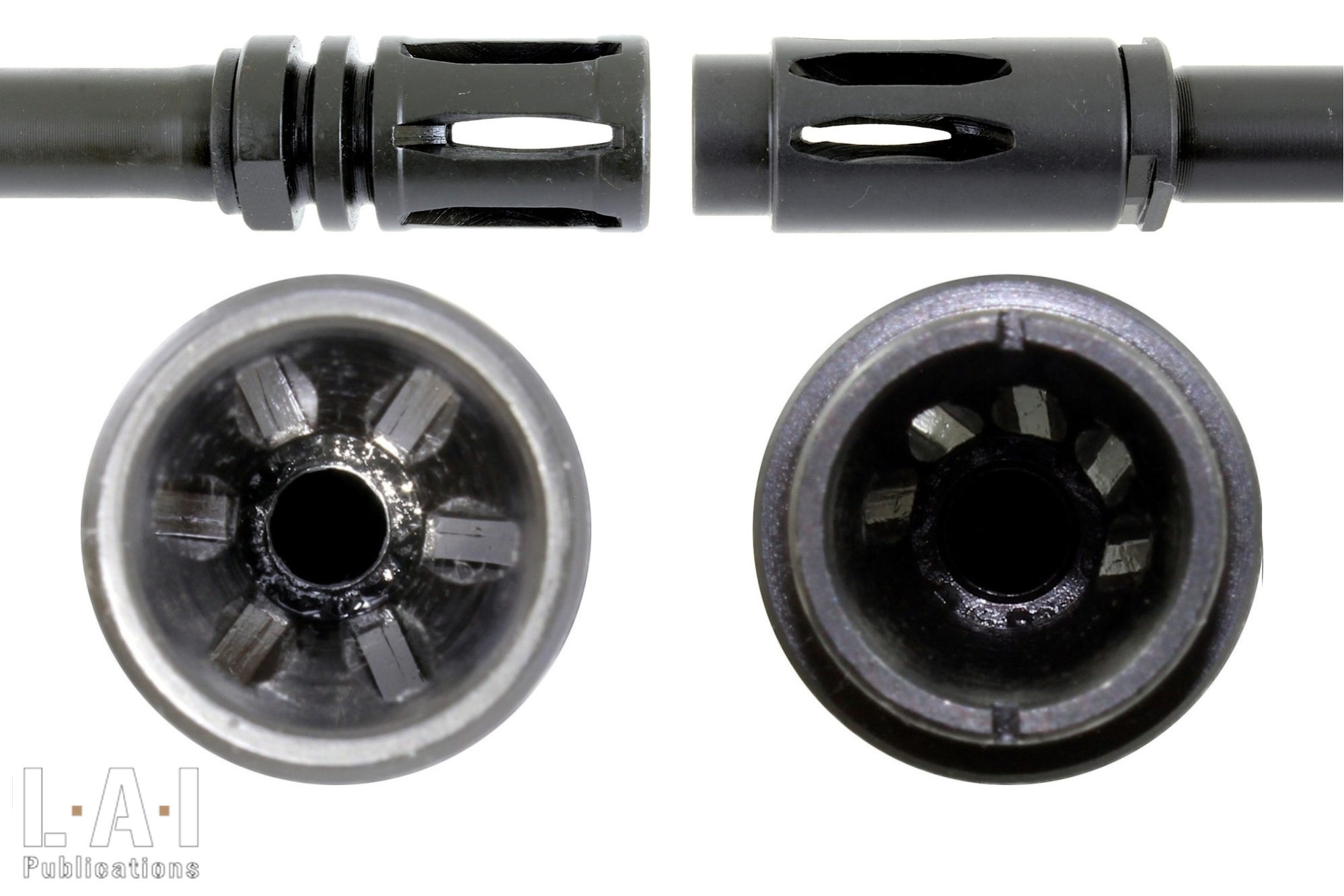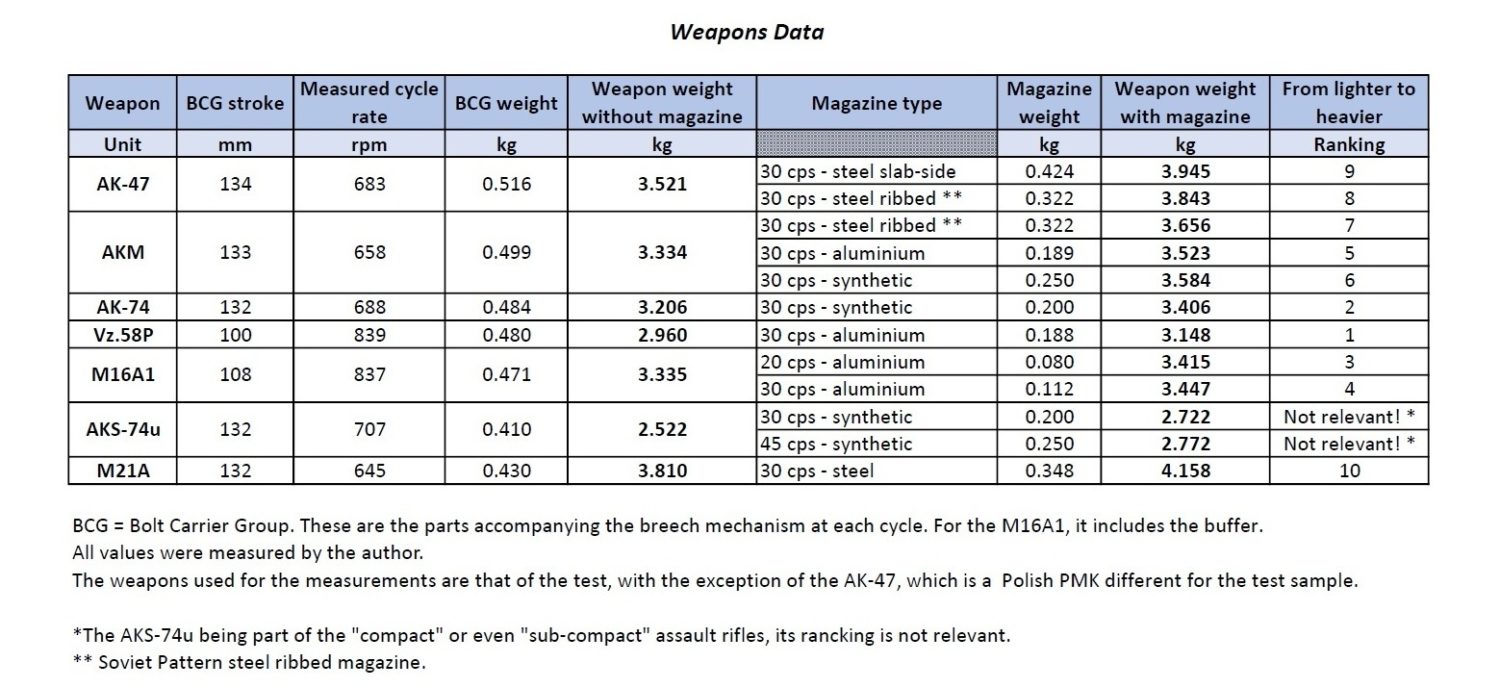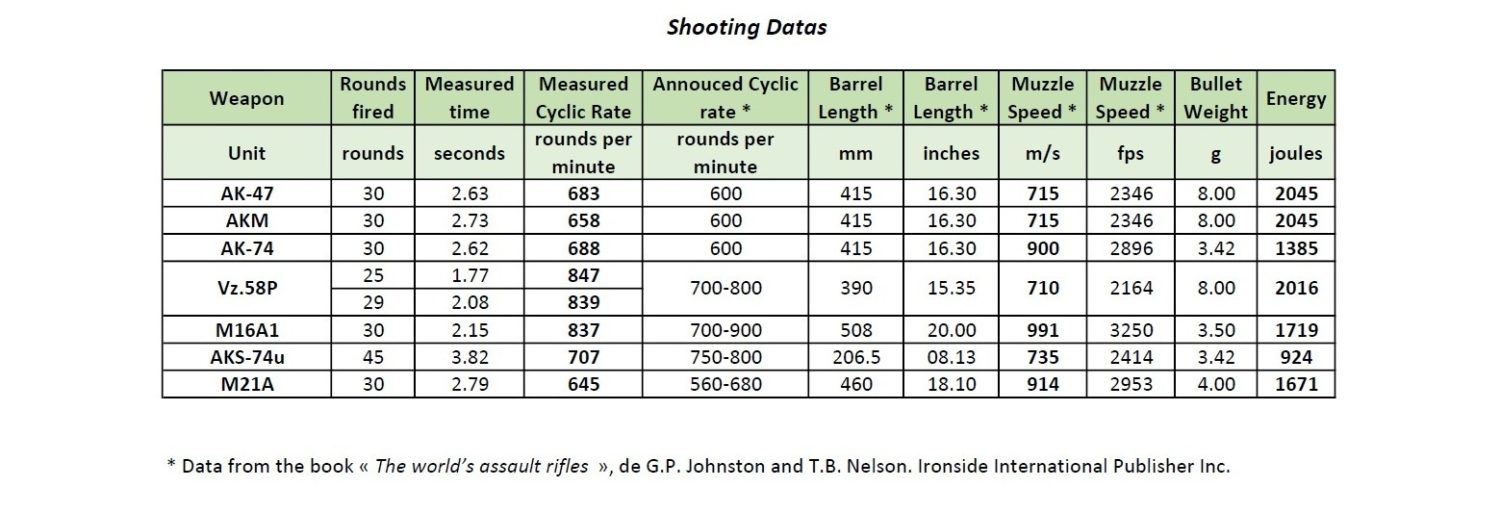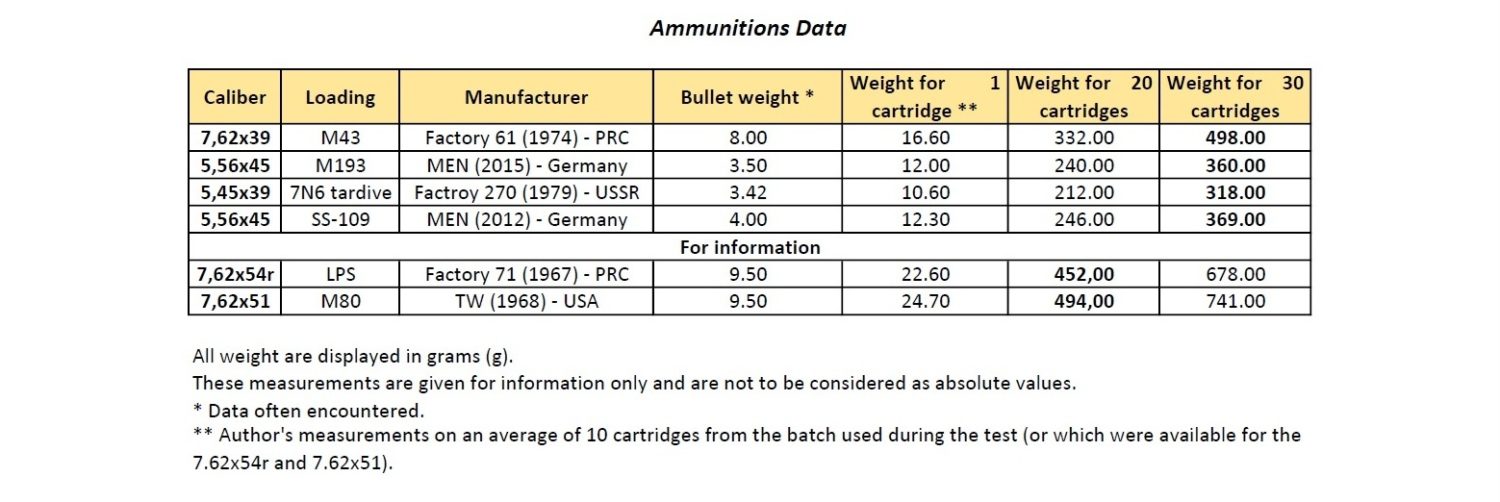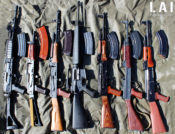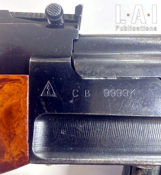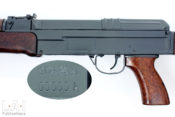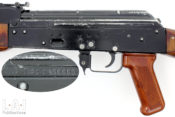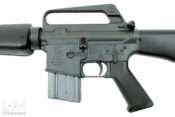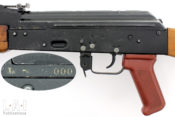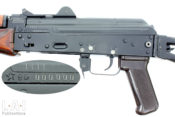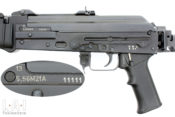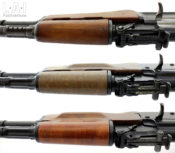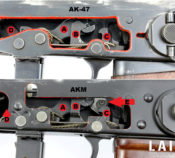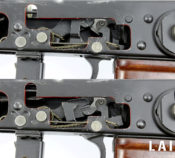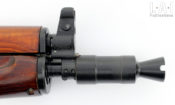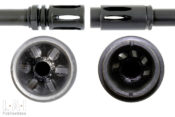Assault rifles: how they behave

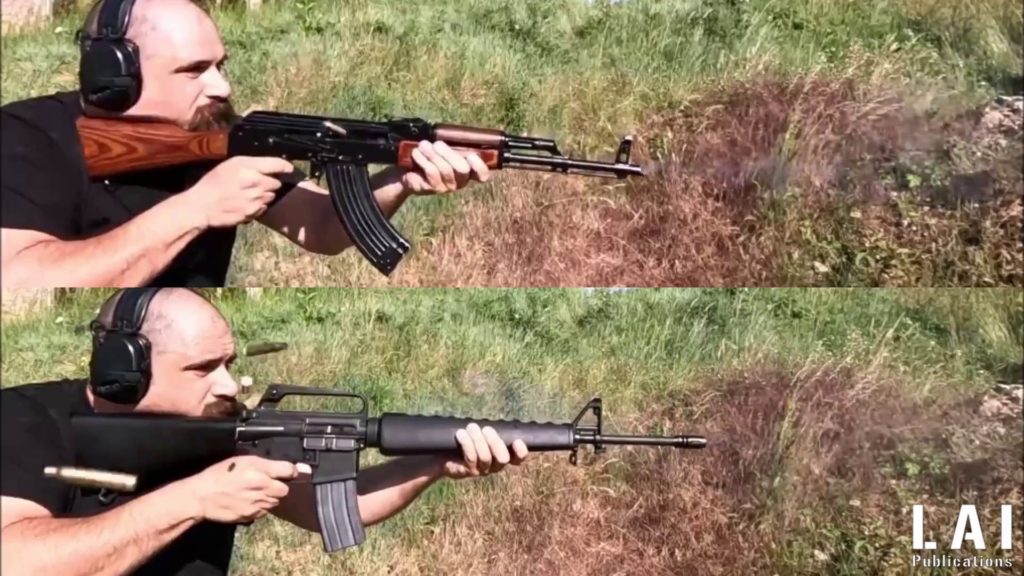
Comparing weapons is always a complex process. Depending on how it is carried out and concluded, this process may be inaccurate, dishonest… but also instructive! Here, we will compare the shooting behavior of a panel of assault rifles whose interest is not to award a “winner”, but to draw lessons that everyone could use wisely to forge his own judgment.
The choice of panel
Regarding the field of the assault rifleAn assault rifle is a weapon defined by the use of an "inter... More, the comparison “AK versus AR” would seem to make sense for historical reasons. However, let us not indulge in this primary emotion of East versus West antagonisms. Here, we feel it is more interesting to study at first sight the evolution of the behavior of the weapons of the “simplified” Kalashnikov assault rifleAn assault rifle is a weapon defined by the use of an "inter... More family, that is to say: AK-47, AKM and AK-74. This will be the basis of this first part. To this panel, it seemed relevant (and funny, let’s be honest and not hide our guilty pleasures!) to add two weapons representatives of the productions of this period 1949-1974: the American M16A1, and the Czechoslovak Vz.58P. Similarly, the addition of a Kalashnikov in caliber 5.56×45 seemed interesting to us: we therefore used a Zastava M21A. Finally, for fun (as well as for the legend!), we also added an AKS-74u. Moreover, this last addition is not devoid of lessons, quite the opposite. (Pic. 01)
This panel requires a few preliminary observations:
- With the exception of the AKS-74u, all these weapons are assault rifles with “standard” barrel lengths for their calibers: about 40 cm for the 7.62×39 and 5.45×39, about 45 to 50 cm for the 5.56×45.
- The comparison of weapons using intermediate ammunition of different generations should not be done (once again) in a “who’s-the-best” mindset. Indeed, comparing the 7.62×39 to the 5.56×45 makes little technical sense, but can have practical applications.
- If the date of conception of the weapons is spread over more than half a century taking into account the M21A, it can in reality be summed up from a technical point of view to the period 1949 (or 1954, the date of production of the AK-47 being 1949 for the type 1 and 1954 for the type 3, which is the most frequently encountered version) to 1980 (year of NATO adoption and standardization of SS-109 used in the M21A). The M21A remains an assault rifleAn assault rifle is a weapon defined by the use of an "inter... More built around the receiver of the RPK, therefore, a technology very close to the AKM.
We will extend the study to some Western small arms in the second part, linked here.
The forces at play
Quick presentation of the material in chronological order:
The AK-47 type 3 (commissioned in 1954): the example of this test is an AK-47 whose receiver was built in Izhevsk, and which is assembled in Bulgaria (Arsenal). The weapon is in its original condition. To illustrate the article part of this work, the picture is that of a Hungarian AK-55… having not been able to take a picture of the Bulgarian copy in “studio” conditions (Pics. 02 and 03). The specificities of the two weapons are very close, with the notable difference of the material of the furniture, probably having an influence on the weight that we could not measure yet.
The Vz.58P (commissioned in 1958): Nothing worth mentioning here, the example of this test is a Czechoslovak production, original and like-new condition … (Pics. 04 and 05)
The AKM (commissioned in 1959): the example of this test is a Radom PMKM (Poland), a variant very close (not to say, almost identical) to the Soviet AKM (Pics. 06 and 07). It is equipped with a slanted climbing compensator adopted around 1965 (we will make a detailed test on this device in a future work). The weapon is in its original condition.
The M16A1 (officially commissioned in the US Army in 1967): the example of this test is a Colt which would come (according to an internet source) from a batch of weapons sold to the Philippines. Original condition… (Pics. 08 and 09) About the date we choose, we can note here that other variations of AR-15 were already in use on the field since the early 60’s. But we focus here on the particular sample at our disposal. That is why we choose the official year of adoption within the US Army.
The AK-74 (commissioned in 1974): the example of this test is an Arsenal (Bulgaria), named AR-M1 in the book of F. lnammico and AKK-74 (Avtomaticheskiy Karabin Kalashnikova) in the book of John Walter (Pics. 10 and 11). Here too, a weapon almost identical to the Soviet AK-74. It can be noted that the stock and the lower handguard are made from raw wood, whereas Soviet productions use laminated wood. The muzzle device is type 2. The weapon is in its original condition.
The AKS-74u (commissioned in 1979): the example of this test is Soviet, produced in Tula. It seems to have been refurbished at the arsenal but has finishes identical to those of newly produced weapons. (Pics. 12 and 13)
The M21A (commissioned in 2004): the example of this test is a variant of Kalashnikov designed and produced by Zastava in Serbia (Pics. 14 and 15). This is the most recent weapon. Less known than the other protagonists of this panel, it is a modernization of the AKM built around the RPK receiver. The Yugoslavs had originally used this receiver (which allows the installation of a larger diameter barrel while using a sheet thicker than the AKM) on a large part of their Kalashnikov production to allow a more durable use of the firing of the rifle grenade. It takes elements of the Galil (transfer of the selector on the right side and folding-stock inherited from the FAL Para but modernized) and the AKS-74u (articulated receiver-cover with locking of the gas tube). The weapon was adopted into the Serbian army in 2004. Here with the M21A, we have a 460 mm barrel, more able to exploit the potential of the 5.56×45.
In other words, quite the family picture, right?!
It should be noted here that whenever possible, we have opted for variants with solid stocks, for comparable ergonomics. Obviously, this is not possible for the AKS-74u and the M21A which are both natively equipped with “lighter” folding stocks. However, in both cases, the grip is finally close to that offered by the other stocks of the panel, which would not have been the case with the folding stocks of the AKS-47 and AKMS.
For ammunition, we only used productions intended for military use (Pic. 16):
- For the 7.62×39, Chinese surplus ammunition (type M43, coppered-steel case). It should be noted here that many tests have been carried out with military surplus ammunitions of Chinese origin, and that contrary to persistent urban legends, these have always given us complete satisfaction!
- For the 5.56×45 type M193, MEN-brand ammunition.
- For the 5.45×39, surplus Soviet ammunition (type 7N6 of late production, lacquered steel case).
- For the 5.56×45 type SS-109, MEN-brand ammunition.
In this kind of exercise, the choice of ammunition is not to be taken lightly: not all ammunition is equal… far from it. We can never stress it enough…
But first things first
To sum up, the evolution of Kalashnikov weapons in the USSR was carried out by taking into account production, ergonomic and finally ballistic aspects with the adoption of the 5.45×39. Here, we will therefore focus on one of the ergonomic aspects: the shooting behavior of the weapon. The other aspects will be addressed in works yet to be published. To change the behavior of the weapon while shooting, the Soviets mainly worked on three points:
- The slope of the stock: it straightens when they adopted the AKM. The goal is to bring the barrel back into the axis of the point of support on the body, and this at the expense of a slightly less instinctive aiming. Indeed, the stock slope of the AK-47 places the sights in the axis of the gaze: on the AKM, it is necessary to slightly lower the head. We get used to it instinctively… (Pics. 17 and 18). In addition, for the exercise of burst shooting at short distance (overall from 25 m), the eye is not normally in the sights … but on target.
- The muzzle device: around 1965, is adopted the slanted climbing-compensator intended to compensate for the climbing of the right-handed shooter, who by the position of the weapon on his body, tends to raise the shot while going to the right. By working the gases on a metal surface, the compensator generates a pulse at the end of the barrel downwards and to the left. The goal is to keep the barrel in the axis. With the AK-74, the device is more complex, because it performs the same function, but also that of flash-hider (combustion of the unburned into a chamber) and muzzle brake: the gas works again on a metal surface, this time to fight the recoil of the weapon into the shoulder of the shooter (Pic. 19). The flash-hider aspect will be addressed soon in another article. Those who are interested in the subject can refer to Chapter 5 of the book “Small Guide for Firearms” available on this site.
- Of course, with the adoption of a second-generation intermediate caliber with the AK-74: the 5.45×39. Among other things, this cartridge has a lower recoil impulse than the 7.62×39 by, of course, having a lower energy.
In addition to these three points, we can note here two other points that participate in the evolution of the behavior of the weapon:
- Weight modification: the transition from the AK-47 type 3 to the AKM generates a lightening measured by ourself of 187 grams for the weapon itself without magazine, and of 361 g if the complete evolution of the magazine is included (that’s to say, from the early steel slab side to the synthetic AG-4 adopted in the 60s)… which is considerable on a weapon of less than 4 kilos! A daily benefit for the soldier but which, with equivalent energy at the muzzle, implies an increase in the recoil felt.
- The ergonomics of the lower handguard allows a better grip of the weapon at the front: smooth on the AK-47, it has a boss on the AKM and finally a boss and a groove on the AK-74. A welcome development… especially when everything is wet… (Pic. 20). Of course, this change does not bring a direct change in the behavior of the weapon, but the improvement of the grip facilitates the exercise. It is therefore an improvement that we will described as “indirect”.
Finally, it is necessary here to introduce the fact that the transition from the AK-47 to the AKM sees the appearance of the hammer retarder in automatic mode. Although this device acts on the rate of fire (often reported to lower the cyclic rate of about 25 rounds per minute), it is not to be assimilated to a “rate reducer”. What for? Because this effect is not measurable as such by the user, unlike a rate-reducer that would lower the cyclic rate by 200 rpm. The purpose of this device, which brakes the hammer only on the burst shots, is to “let the pieces fully take their place before the start of the next burst shot“. This device is detailed in the pictures 21 and 22.
To visualize this evolution, we made 3 first comparative videos:
- AK-47 / AKM: chronological evolution.
- AKM / AK-74: chronological evolution.
- AK-47 / AK-74: family assessment.
Our protocol
Each sequence is carried out by firing a single burst of 30 shots… except when yours truly “screws up” when loading the magazine. This is the case for the Vz.58P, but we will detail it in due time.
Shootings were conducted form a standing position. This choice make sense to us considering the assault rifleAn assault rifle is a weapon defined by the use of an "inter... More main purpose:
- From a prone position, a posted shooter should deliver accurate shooting, taking times to care his shot in order to spare ammo. Therefore, the semi-automatic mode seems more adapted to this shooting position. Of course, it doesn’t mean that burst shooting (with a bipod or not) is never achieved from a shooting position!
- From a standing position, the moving shooter balances the lack of the needed time to make an adjusted shot on a glimpsed target by the saturation of an area, consenting here to a waste of ammo for that purpose. Therefore, automatic mode seems to us more suitable for this shooting position. And of course, here too, it doesn’t mean that single mode is never used form a standing position.
Obviously, if the shooter’s body doesn’t buffer the weapon behavior in the same way in each position, we can find commonality in it.
Let us insist here on the fact that the gain in the behavior of the weapon is as well perceptible in semi-automatic as in automatic firing:
- In semi-automatic, by depointing less, it allows a faster resumption of the aim and therefore a great repetitiveness of shots. This is a gain often omitted in many books on the subject … for a reason that seems very strange to us!
- In automatic, it limits the dispersion of shots and therefore allows a better management of the “lead sheaf” to make a comparison with the use of a shotgun … which is not trivial. The purpose of burst is the same as that of firing buckshot or birdshot: multiply the bullets in a given aera in order to maximize the hit probability on a single shooting action. Of course, there are exceptions, such as the AN-94 where the goal is to place (presumably, up to 100 m according to our information) two bullets in the same hole to undo the ballistic protections. But exceptions don’t make a rule…
For the purposes of the demonstration, the behavior of the weapon is easier to highlight with the firing of a long burst … while being more spectacular!
My way of watching this type of video
Let us first establish here that we are interested in the weapons’ behavior, and in particular of their barrels, which indicates the directions of the shots. The movements caused by the shot generally induce angular variations of the barrel from one shot to another, and therefore a difference in the point of impact. However, some weapons tend to position the barrel without noticeable angular amplification…and others overdo it. Paradoxically, this is reflected in the image:
- Some “large” movements will lead to small dispersion on the target, despite the distance, insofar as the barrel remains on a plane relatively parallel to the previous shot: the shots follow relatively parallel trajectories.
- Conversely, “small” movements at the muzzle, but generating a significant angular variation of the barrel, will lead to a significant dispersion of the shots, amplified with the distance: the shots follow oblique trajectories.
For the shooter, in this type of exercise, the aim is normally to “group the shots”. But this very often translates into “lowering the burst”, or at least preventing it from climbing too much. It is therefore normal to note that the effort of the shooter is to lower the shot. He also has only a short time to act: therefore the “sudden” movements.
Several phases and particular points of each video are in my opinion interesting to watch:
- The first shots fired: closely watch the muzzle of the barrel. These first shots occur before the body (including the brain) has time to react. Thus, the body can only endure, and we see on these first shots the real behavior imprinted by the weapon.
- The “middle” of the burst: we monitor the entire weapon to observe its overall behavior. The body having taken into account the constant movement of the weapon, we see, how it is possible to control the movements of the weapon … as long as the weapon is controllable! But this is the case here for the whole panel: we will see in part 2 of this work (linked here) what happens to individual weapons in 7.62×51… sometimes usurping the name of “assault rifle”. The term “Battle Rifle” allows a distinction between the two families that in our opinion, is worthwhile.
- The end of the burst: as soon as the last shot is fired, we look back again to the muzzle of the weapon. Similarly, to the beginning of the sequence, stopping the shot frees the body from stress produced by the burst at a speed greater than what the body (including the brain) can take into account: the body endures. From then on, the body produces a movement that fits to the muscular effort produced during the firing phase to master the weapon: forward movement (taking into account the recoil) sometimes accompanied (depending on the case) with a downward movement (taking into account the climbing).
- The smoke: it makes it possible to understand the direction that the gases take at the exit of the barrel and to materialize, if necessary, the work of the muzzle device. This last point explains the reason why we framed the movie the way we did: it must be large enough to enable to visualize the smoke at the front of the weapon.
Of course, everything is interesting to watch on this type of video (ok, maybe with the exception of the shooter’s face) … but these few points really make it possible to understand the behavior of the weapon … and the shooter’s ability to control it.
As an indication, the videos are filmed in 240 frames per second, for a final rendering with a slow motion in 1/8 of the normal speed.
For each sequence, and for comparative purposes, the cyclic rates will be indicated. These are determined by the measurement of the time between the first shot start (first smoke exit at the end of the barrel) and the last shot (last smoke exit at the end of the barrel). From there, a computer spreadsheet will do the work to provide us with the most accurate numbers possible. The table is available at the end of the picture gallery.
Each video includes the following sequences:
- The sequence compares in slow motion with the oldest weapon at the top.
- Real speed shooting of each weapon alone in chronological order.
- Slow-motion shooting for each weapon alone in chronological order.
We will describe the phenomena observed on the go and in an opportune way. The goal is to expose as clearly as possible a maximum amount of information to readers, allowing them to form their own ideas.
Last point, remember that YouTube allows you to slowdown the playing speed of the video: this arrangement is especially useful here.
1. AK-47 & AKM
Measured cyclic rates on the sequence:
- AK-47 type 3: 30 rounds in 2.63 seconds, or 683 rpm.
- AKM: 30 rounds in 2.73 seconds, or 658 rpm.
What is visible on the video: in general, if the firing of the AK-47 tends to go up, that of the AKM tends to … go down! This difference is very visible:
- On the first shots: the AK-47 goes up, the AKM remains in line, or even goes down!
- At the end of the shot: the AK-47 dives forward and down, the AKM goes mainly forward.
The smoke shows the work of the muzzle device: on the AK-47, it goes straight forward whereas on the AKM, it climbs forward…and in fact, to the right, but it’s not visible here.
Similarly, the AKM barrel experienced a remarkable bending at the start of the shot: the action of the gases on the muzzle device “twists the barrel”.
The AKM is more “restless” than the AK-47: the difference in weight seems to be a satisfactory explanation.
We observed that both weapons imprint a “roll”. This roll is in all likelihood attributable to three factors (chronological order):
- The rotation of the bullet by the grooves in the barrel.
- The unlocking rotation of the bolt (observation added due to the kindly documented contribution of Mr. Kempeneers Gabriel that we wish to thank here).
- The alternating presentation of the ammunition in the magazine. Thus, when we look at the first shot, it is clear that the magazine imprints a movement on the side when the bolt carrier group (BCG) moves back, then when taking into account the ammunition when the latter is returning. Thus, the ammunitions being taking account in an alternated way on the lips, the magazine imprints a pendulum movement reinforced by each cycle. This last point, founded on other works (among other things, on Valmet M76), remains to be explored.
The proportion of each of the factors seems to us difficult to estimate with the data at our disposal. However, the rotation of the bullet seems to have a preponderant role: the weapon seems to imprint a “jerk” of hourly rotation (a jolt to the right for the lower end of the magazine, or a rotation in the direction of the stripes, on the right) with each shot and we note that this roll is less marked on the weapon with the shortest barrel: that of the AKS-74u (detailed below) … or one where the barrel twist rate is longer (M16A1: 1:305 mm, or 1:12 inches). Moreover, the documents transmitted by Mr. Kempeneers (analysis of the FN SCAR-L recoil movement by scientific means) also show that the unlocking movement of the bolt an important part in this phenomenon.
Finally, the cyclic rate of the AKM is slightly lower: the cause could be the hammer retarder mentioned above. However, let us be careful not to be categorical here about the cause of this difference in cyclic rate… the general condition of the weapon (wear of the gas port, condition of the springs …) could also explain this difference which remains minimal for the shooters.
What is not visible on the video: let’s immediately debunk a myth sometimes encountered: the two weapons are perfectly controllable in automatic mode. However, the effort to be made on the AKM is less important than for the AK-47. During a “peaceful” exercise like here (no stress, on the contrary…) the AK-47 remains very controllable. However, with a less adequate position, the burst is quickly off target (depending on the distance, of course…). With the AKM, the thing is much easier: one even tends to go down when poorly positioned.
On this comparison: this first comparison is very interesting, because it highlights very well the evolutions of the weapon. We understand here why the Soviets made the choice to replace their arsenal of weapons only 5 years after the start of production of the AK-47 type 3:
- The production gain is considerable (switch to stamped sheet, optimization of production by a redesign of most parts).
- The soldier is a double winner: the weapon is lighter while having a better shooting behavior.
As a counterpoint, the user of the AK-47 might prefer its thorough disassembly (in reality, that of the firing system and the recoil-spring assembly) slightly simpler than that of the AKM… but I’m nitpicking!
2. AKM & AK-74
Measured cyclic rates on the sequence:
- AKM: 30 rounds in 2.73 seconds, or 658 rpm.
- AK-74: 30 rounds in 2.62 seconds, or 688 rpm.
What is visible on the video: the AK-74 recoils less deeply in the shoulder than the AKM. The second-generation intermediate ammunition and the muzzle brake do their job here. The climbing is finally quite comparable, even if the AK-74 lowers less sharply. The cyclic rate of the AK-74 is here slightly higher: the change of caliber can explain this (more pressure at the gas port?) … however, here too, let us be careful not to be categorical about the cause of this slight difference. In any case, the cyclic rates are similar. At the end of the sequence, the “die is cast”: the AK-74 moves very little, especially in comparison with the AKM.
The smoke is noticeably “slower” on the AK-74: it has worked in the muzzle device and begins to diffuse visibly around it, and not as far ahead as in the two cases seen above.
As on the AKM, the AK-74’s barrel underwent bending when fired due to the action of the gas on the muzzle device.
What is not visible on the video: as on the previous video, one of the two weapons is much easier to master than the other. Here, and without suspense, it is the AK-74. This weapon easily excuses a wrong position.
On this comparison: legitimacy is already more questionable than the first because of the difference in caliber. However, it retains historical legitimacy in the face of the evolution of the weapon. Of course, the gain in the behavior of the weapon does not alone justify the replacement of the arsenal. Here, the leitmotiv is the transition to the intermediate caliber of second generation:
- Increased engagement distance by a higher muzzle velocity (900 m/s for the 5.45×39 in an AK-74 versus 715 m/s for the 7.62×39 in an AK-47 / AKM). This translates into a gain of 140 m on the battle sight zero, from 300 m on AK-47 / AKM to 440 m on AK-74.
- Increased ammunition carrying capacity. This gain is palpable globally in the supply chain.
- Lethal effect improved by a more studied terminal behavior (the 5.45×39 bullet tilts faster).
Here too, this is necessarily to the detriment of something else: but the comparison between first and second-generation intermediate calibers needs a work on its own.
In addition to this test, it can be pointed out that the disassembly of the firing system has received a modification intended to facilitate this operation by the soldier… a kind of correction of the “defect” we previously mentioned introduced on the AKM! The thing will be detailed in a work to come.
3. AK-47 & AK-74
Measured cyclic rates on the sequence:
- AK-47 type 3: 30 rounds in 2.63 seconds, or 683 rpm.
- AK-74: 30 rounds in 2.62 seconds, or 688 rpm.
What is visible on the video: finally, and logically a synthesis of the previous cases. The AK-74 offers a greater stability than the AK-47, very visible on the first shots and at the end of the sequence. It could not be otherwise! Fun fact, in this case the cyclic rate is almost identical! We notice that in the “heart” of the burst, the two weapons remain in line: they are controllable. But the problem remains the same: under what conditions of use?
What is not visible on the video: answer to the previous question… Obviously, the AK-74 is much more permissive than the AK-47… In the end, the AK-74 requires few “corrective” actions. By exaggerating the line, one could say that it is possible to “let it live”.
On this comparison: here, we engage in a first comparison that is not fair from a technical or historical point of view. However, it is full of common sense regarding family evolution. Yes, the soldier benefits from an overall more efficient tool for his “infantry combat” mission.
Let’s broaden our field of vision
After this step on the evolution of behavior within the same family, let us go to some more questionable comparisons, but no less instructive ones! We will follow here a “chronological” framework so as not to totally discard reason in this exercise …
4. AK-47 & Vz.58P
Well, as mentioned earlier, I was not a 100% in what I should have done! With a fault which is undoubtedly my own, the magazine of the Vz.58P contained only 25 cartridges on the sequence originally intended for comparison. Luckily, that same day I had another take of… 29 cartridges. Well… In addition, it had been made with the protective shell of the camera … except that it significantly alters the quality of the sound … I am still learning to tame the material… More seriously, a beginning of explanation lies in the fact that the magazine of Vz.58 does not have a loading indicator hole. Thus, when supplying the magazine from a “bulk” packaging without counting the cartridges, one can easily be misled by the apparent hardness of the loading of an already well-filled magazine. Especially since this magazine is much harder to load than an AK’s … I’ve taken good note of this for the next time.
In order to apologize for these grotesque mistakes, I offer… more videos! The two Vz.58P video sequences will be available: the one with 29 shots will be used for the behavior comparison while the 25 shots one will be added as a “bonus”, to have a correct sound for the “auditory” comparison.
It should be noted that these errors of realization do not have any consequence on the conclusions of this work…
Measured cyclic rates on the sequence:
- AK-47 type 3: 30 rounds in 2.63 seconds, or 683 rpm.
- Vz.58P: 29 rounds in 2.08 seconds, or 839 rpm and 25 rounds in 1.77 seconds, or 847 rpm.
What is visible on the video: finding a similar stock slope with an identical caliber, the first 3 shots fired produce an almost identical behavior. Subsequently, the Vz.58P is more restless than the AK-47. This is consistent with the difference in weight and cyclic rate:
- A measured weight at 3,945 kg for the AK-47 type 3 for a rate of fire measured at 683 rpm (weight measured on a Polish sample different from the sample we shot with: the update will be done as soon as possible).
- A measured weight at 3.148 kg (almost π!) for the Vz.58P for a rate of fire measured at 839 rpm for the comparative sequence.
The Vz.58P is slightly 20% lighter than the AK-47 type 3 and 23% faster! Differences that matter…
On the sidelines of the behavior, we note that the Vz.58P regularly produces a flame visible in broad daylight: we will come back to this aspect in a work to come… sorry, but you cannot have every subject available all at once! However, we can already question a slightly shorter barrel, and above all, the difference in rate of fire.
What is not visible on the video: the Vz.58P is an excellent rifle: lightweight, accurate, reliable, and of exceptional accessibility for cleaning. Readers already familiar with my work know how much I like this last point and for good reason: I probably spend more time cleaning than shooting, something that does not bother me! But let’s be clear, among the panel, it is the most difficult weapon to master for this exercise. As already mentioned, three causes can be discerned at first glance: a featherweight, a high cyclic rate and a stock slope that is not favorable to the exercise. To these three causes, we can add a common point to all the weapons seen so far: the stop of the BCG. The stop is indeed brutal on the 4 weapons seen so far: the BCG stroke is short (in order to keep the “compact” weapon) and there is no buffer (probably for economical purposes). Therefore, at each cycle, the BCG “hits” the receiver (an observation anyone can easily make). This shock is reflected in the behavior of the weapon.
On this comparison: it makes particular sense. Indeed, both weapons use the same cartridge and are of the same era. The fact that the two weapons employ a radically different mechanics is a bonus here: it allows us to better understand the influence of certain factors.
5. Vz.58P & AKM
Measured cyclic rates on the sequence:
- Vz.58P: 29 rounds in 2.08 seconds, or 839 rpm and 25 rounds in 1.77 seconds, or 847 rpm.
- AKM: 30 rounds in 2.73 seconds, or 658 rpm.
What is visible on the video: the observations made on the AK-47 / AKM comparison are found globally here, and in a more telling way.
What is not visible on the video: “bis repetita” of the findings made on the AK-47 / AKM comparison, but here too, in a more telling way… the Vz.58P is not easily tamed… the AKM much more.
On this comparison: the two weapons are extremely contemporary and use the same cartridge. The comparison is therefore not meaningless. While the stock slope and the climbing compensator make much of the difference, the cyclic rate and the weight (3.148 kg for the Vz.58P with its aluminum magazine and 3.656 kg for the AKM with ribbed steel magazine as on the screen) are not unrelated to the behavior of the weapon.
6. AK-47 & M16A1
Measured cyclic rates on the sequence:
- AK-47 type 3: 30 rounds in 2.63 seconds, or 683 rpm.
- M16A1: 30 rounds in 2.15 seconds, or 837 rpm.
What can be seen in the video: the AK-47 produces a climbing and recoil much higher than the M16A1. The thing is particularly palpable at the beginning and end of the sequence. The M16A1 offers excellent automatic stability. It climbs slightly at the beginning of the burst, then stabilizes. It is noted that the recoil / climbing produced by the M16A1 is light and constant.
What is not visible on the video: The AK-47 obviously needs a much superior grip than the M16A1, even if as explained below, the M16A1 requires a firm grip. The M16A1 hand guard is pleasant for this exercise, even if from an ergonomic point of view, it does not really make sense! Indeed, the fact of being thick on its rear portion makes its handling for small people not easy (handguard too large for small hands). Of course, it makes sense in the face of the thickness of the barrel… but it is easy to understand the passage to the round handguard (and thinner on the rear) of the M16A2. From an aesthetic point of view (so totally subjective), this one remains my favorite…
On this comparison: it makes no sense! From a contextual point of view, the AK-47 was no longer produced within the USSR while the M16A1 was being introduced as a service weapon. From a technical point of view, the calibers are very different: first generation intermediate caliber on the AK-47 and second generation on the M16A1. So why make this comparison? Well, because if I didn’t do it, I’d have been blamed for it! So, it’s done, let’s move on.
7. AKM & M16A1
Measured cyclic rates on the sequence:
- AKM: 30 rounds in 2.73 seconds, or 658 rpm.
- M16A1: 30 rounds in 2.15 seconds, or 837 rpm.
What is visible on the video: the AKM is more restless than the M16A1 although it goes down where the M16A1 rises very slightly. Thus, when the sequence ends, the body produces a return towards the ground more important than with the AKM: the compensator here worked very well, it limits the muscular effort to be produced to compensate for the climbing in the AKM.
What is not visible on the video: as stated previously, and as strange as it may seem, the climbing of the M16A1 indeed requires more “grip” than that of the AKM. Thus, the AKM will more easily excuse a mistake on this exercise. In addition, like the Vz.58P, the high cyclic rate does not help in the exercise: the body (brain included!) appreciates that it is given time to handle operations. Be careful, the M16A1 remains very maneuverable for this exercise, like most assault rifles chambered for a second-generation intermediate ammunition.
On this comparison: it makes sense from a contextual point of view, but not from a technical point of view. At the time the M16A1 was spreading in the US Army, the AKM was the weapon in service in the USSR. From a technical point of view, the comparison between two weapons firing intermediate ammunition of different generations leads to an obvious pitfall: the intermediate ammunition of first generation produces a recoil greater than that of the second generation. And for good reason, the energy levels are different:
- At 991 m/s, the 3.5 g bullet of the 5.56×45 M193 develops 1719 joules at the muzzle of the M16A1.
- At 715 m/s, the 8.0 g bullet of the 7.62×39 M43 develops about 2045 joules at the muzzle of an AK-47 or AKM. That’s nearly 18.9% more than the M193.
Contrary to some beliefs, the AKM is “only” around 200 g heavier than a M16A1 (which is 06% more).
And yet, the AKM is doing very well.
8. M16A1 & AK-74
Measured cyclic rates on the sequence:
- M16A1: 30 rounds in 2.15 seconds, or 837 rpm.
- AK-74: 30 rounds in 2.62 seconds, or 688 rpm.
What is visible on the video: if both weapons are very stable, the AK-74 is more restless than the M16A1. Several factors contribute to this finding:
- The distribution of moving masses (BCG), objectively better achieved in the AR-15 family (of which the M16A1 is part of) than in the Kalashnikov’s, because they are well in line with the axis of the barrel and shoulder. We note here that the masses of the BCG are very close: weighed at 471 g on the M16A1 (shock absorber included, of course) and 484 g on the AK-74 … only about 2.8% more for the AK-74! For the record, the AKM BCG of this test was scaled at 499 g.
- The difference in twist rate: 1:300 mm for the M16A1, 1:200 for the AK-74. This difference necessarily has an impact on the roll of the weapon. For the record, the bullets are of similar masses: 3.5 g for the M193, 3.42 g for the 7N6.
- The stop of the BCG: made on a shock absorber made of synthetic material on the M16A1 … and steel on steel in the AK-74! We note that the stroke of BCG is higher on the AK-74: 108 mm for the M16A1 against 132 mm for the AK-74. This partly explains the difference in the rate of fire.
However, at the end of the shot, the barrel of the AK-74 remains almost in line whereas the M16A1’s dives slightly: the muzzle device of the AK-74 has done its job.
What is not visible on the video: as suggested by the end of the firing sequence, AK-74 requires less effort than the M16A1. As mentioned earlier, the AK-74 really excuses a wrong positioning (without exaggeration, of course…) and does not produce excessive climbing or lowering. The M16A1 requires a more “manly” grip …
We can wonder here about the difference induced by the difference in ammunition power:
- At 991 m/s, the 3.5 g bullet of the 5.56×45 M193 develops 1719 joules at the muzzle of an M16A1.
- At 900 m/s, the 3.42 g bullet of the 5.45×39 7N6 develops about 1385 joules at the muzzle of an AK-74.
The M193 fired in an M16A1 thus produces a power at the muzzle 24.1% higher than the 7N6 at the muzzle of the AK-74!
As an indication, at 948 m/s, the 4.0 g bullet of the 5.56×45 SS-109 develops about 1797 joules at the muzzle of an M16A2. These differences in power necessarily have a consequence on the recoil. As for the effectiveness of the ammunition, this is another debate, but let us simply remember that the bullet must be able to quickly transmit its energy to the target to be effective, and this in a range compatible with the intended use of the weapon. Reducing the terminal ballistic/injury evaluation of ammunition to 5 m shots is practical nonsense.
On this comparison: like the AK-47 /AKM, AK-47 / Vz.58P and AKM / Vz.58P ones, it is rather relevant, because it is between two assault rifles of intermediate calibers of second generation. But we must be aware that from a contextual point of view, the couple M16A1 / 5.56×45 M193 has paved the way for the other assault rifles of this generation. In addition, it should be noted here that the shooting quality (behavior of the weapon, accuracy) of the M16A1 is undeniably good… the problem lies somewhere else… but that’s another story!
9. AK-74 & AKS-74u
Measured cyclic rates on the sequence:
- AK-74: 30 shots in 2.62 seconds, or 688 rpm.
- AKS-74u: 45 shots in 3.82 or 707 rpm.
What is visible on the video: both weapons are stable. However, “surprisingly “, the AK-74 is more restless than the AKS-74u. The difference in behavior seems to be mainly related to the “roll” of the weapon. As already mentioned, this roll seems to be mainly attributable to the rotation of the bullet inside the barrel: the presence of the bullet in the barrel being more than twice as long in the barrel of the AK-74 as in the AKS-74u. Similarly, the 3.42 g bullet reaches only 735 m/s in the 206,5 mm barrel of the AKS-74u for a muzzle energy of less than 924 joules, about 34% less than in an AK-74. In counterpoint, the AKS-74u is lighter than the AK-74.
However, at the end of the sequence, the AKS-74u dives more than the AK-74: there is no climbing compensator!
As a side note, we can observe a gaseous return by the chamber with each shot in the AKS-74u (Pic. 23). The thing (linked among other things to the muzzle device of the AKS-74u) being treated in a dedicated article linked here, we will not discuss the subject any further (Pic. 24).
What is not visible on the video: as suggested by the end of the sequence, the AKS-74u requires more grip than the AK-74. However, the weapon remains perfectly controllable.
On this comparison: what is interesting here is that it allows the comparison between a “classic” assault rifleAn assault rifle is a weapon defined by the use of an "inter... More and a “compact” version… or even “sub-compact” because equipped with a barrel only 206.5 mm long, which allows a complete twist of the groove (chance? I don’t think so…the twist rate of the AKS-74u is a weapon’s specificity…). On second-generation intermediate-caliber weapons, the short-barreled models tested by yours truly to date have always proven to be very controllable… and sometimes more so than their long-barreled versions! The reason for this is simple: analogous to the speed of the bullet, the recoil impulse of the weapon is the inverse function of the length of the barrel. However, another factor must be included in this calculation: the weight of the weapon. When the barrel shortening leads to the lightening of the weapon, then the recoil speed is increased.
Finally, why did I opt for a 45-shot magazine for the AKS-74u. Well… for the fun of it! It does not change the observations even if, of course, an identical magazine capacity would have made it easier to visualize the difference in rate of fire, which was ultimately minimal.
10. AKM & M21A
Measured cyclic rates on the sequence:
- AKM: 30 rounds in 2.73 seconds, or 658 rpm.
- M21A: 30 rounds in 2.79 seconds, or 645 rpm.
What is visible in the video: the behavior of the two weapons is strikingly similar. The M21A produced a slightly higher descent on the first shots than the AKM. Note that just like the AKM, the M21A has a climbing compensator: its muzzle device consists of a flash-hider closed on its lower portion (Pic. 25). At the end of the sequence (almost simultaneous on both weapon!), the movement of the weapons are very close. The smokes are quite different: the M21A’s having a greater tendency to go down than the AKM’s which tend to spread upwards.
What is not visible on the video: for me the M21Arequires a greater effort to control the long burst compared to the AKM. But here, the problem seems to come from yours truly: my size is generally inadequate for this weapon… I’m too… stocky! Indeed, the pistol grip is at too great a distance from the length of my arm and thus, my elbow is “floating”, which induces a bad shooting position, but, in this case, inherent to the weapon / shooter couple.
On this comparison: originally, the comparison of two weapons of different calibers, but of a similar – not to say identical – mechanics can make sense. However, what is surprising is the behavior of the M21A, which is not frankly more “stable” than an AKM… in the hands of yours truly! Indeed, it would be interesting to make the same comparison with a taller shooter where the weapon would probably be better served. Finally, let’s remain rational, the weapon is still controllable, but its size makes it – without a shadow of a doubt – the weapon of the panel that I struggle the most with getting a good grip of. The least controllable weapon in this exercise remains the Vz.58P… do not confuse grip and shooting behavior!
Finally, one should keep in mind that the M21A is the heaviest weapon of the panel.
11. M16A1 vs M21A
Measured cyclic rates on the sequence:
- M16A1: 30 rounds in 2.15 seconds, or 837 rpm.
- M21A: 30 rounds in 2.79 seconds, or 645 rpm.
What is visible in the video: the behavior of the two weapons is extremely similar, although the M21A is more restless. It imprints a larger roll… perhaps (probably?) due to the difference in twist rate and bullet mass: 1:305 mm for the M16A1 with a 3.5 g bullet, 1:178 mm for the M21A with a 4.0 g bullet. Thus, the rotation is faster in the M21A with a heavier bullet. In addition, the findings on the BCG masses made previously (M16A1 & AK-74) are still valid here. We note at the end of the sequence that the two weapons dive forward, and that the M16A1, plunges a little further down. The cause is simple: the muzzle device of the M21A acts as a climbing compensator and relieves the efforts to be made. The smokes reflect the work of the muzzle device: the M16A1’s spreads uniformly at the exit of the barrel while the M21A’s part mainly upwards. Let’s take the opportunity to point out a double effect: in dusty environments, a flash-hider open on the bottom raises the dust with each shot, which, depending on the wind, can be a real issue… as we have already experienced on different shooting ranges in different seasons. With a flash-hider closed on its lower portion, the problem is often alleviated when it is not altogether removed.
What is not visible on the video: as mentioned in the previous comparisons, the handling of the M16A1 (I am not talking here about the ergonomics of the controls of the weapon!) is much more pleasant in my case than the M21A’s. The mastery of the M16A1 is thus much more pleasant to me than the M21A’s.
On this comparison: The comparison between two weapons in 5.56×45 with long barrel necessarily makes sense even though here, the ammo used (and dedicated to each weapon) are different. And we notice here that the behavior of the two weapons is finally very close despite a very different mechanics and ergonomics.
12. AK-74 & M21A
Measured cyclic rates on the sequence:
- AK-74: 30 rounds in 2.62 seconds, or 688 rpm.
- M21A: 30 rounds in 2.79 seconds, or 645 rpm.
What is visible on the video: Both weapons are restless but remain in the axis. The first shots fired offer a similar behavior: both weapons have a climbing compensator. At the end of the sequence, the M21A moves forward more than the AK-74: no surprises here as the weapon does not have a muzzle brake in addition to using a more powerful ammunition.
What is not visible on the video: as already hinted above, the AK-74 remains the easiest assault rifleAn assault rifle is a weapon defined by the use of an "inter... More tested for this exercise. The M21A remains controllable, but once again, remains less tolerant of positioning error, especially for a small size individual.
On this comparison: the comparison is interesting, but not perfect. It would have been more interesting to compare AK-74M (5.45×39) and AK-101 (5.56×45), that is to say the two weapons where only the caliber differs… but we have to do with what we have at our disposal!
In conclusion
Far from allowing us to award a prize to one of the weapons tested, this multiple comparison exercise allows us a general reflection on the subject that seems appreciable to us. Why not hand over a palm? Simply because the evaluation of a weapon is not carried out on only one of its aspects! For example, we have not mentioned here the questions of reliability, accuracy, maintenance of these weapons, points that are at least (or even more for some) as important as the shooting behavior of the weapon, subject of this work. So many criteria that can only be evaluated in the context of a duly qualified need: a good infantry assault rifleAn assault rifle is a weapon defined by the use of an "inter... More is not necessarily the same as a good assault rifleAn assault rifle is a weapon defined by the use of an "inter... More for a SWAT Team. Rather than a judgment, we offer here to develop a reflection on this subject, a reflection specific to each one! A useful reflection to understand the work undertaken on atypical weapons such as the HK G11 (whose caseless cartridge was not the only purpose), the AN-94 “Abakan”, or finally the AEK-971, AK-107 and 108.
Arnaud Lamothe
Bibliography:
“The world’s assault rifles”, Johnston and Nelson. Ironside International Publisher Inc. This book provided us with the theoretical numerical data used (mass of weapons, initial speed, theoretical rate of fire, barrel length).
« AK-47: The Grim Reaper », second edition, Frank Innamico, Chipolte Publishing LLC.
“Kalashnikov: The Arms and the Man”, Eduard Clinton Ezell, Collector Grade Publications.
“Soviet Small-Arms and Ammunition”, David Naumovich Bolotin, Finnish Arms Museum Foundation.“Kalashnikov”, John Walther, Greenhill Military Manuals.


